|
Making preparation for one of the biggest events of the year St Francis is thought to be the first to have brought nativity scenes into our homes and churches. He did so way back in 1223. Putting out the nativity scene can be an unfolding story. Maybe this year you start with an empty stable full of farm animals, then on Christmas Eve Mary and Joseph might arrive. Finally, on Christmas Day the baby Jesus can arrive, followed by shepherds and wise men. The Christmas tree’s origins go way back to the time of Saint Boniface (634–709), who was a missionary in Germany. He is said to have taken an axe to an oak tree dedicated to Thor from German mythology and pointed out a fir tree, which he stated was a more fitting object of reverence because it pointed to heaven and it had a triangular shape, which he said was symbolic of the Trinity. Putting a tree up in your lounge where everyone can see it is a great way of letting people know that the Jesus and the Christmas holiday season is coming. Now is the time to take things easy and get ready to celebrate something special: the birth of Jesus, the Son of God, coming to live amongst us. The traditional colors of Christmas decorations are red, green, and gold. Red symbolises the blood of Jesus, which was shed in his crucifixion; green symbolises eternal life and the evergreen tree, which does not lose its leaves in the winter; and gold is the first colour associated with Christmas, as one of the three gifts of the Wise Men, symbolising royalty. These are age old traditions. We can add traditions of our own. In New Zealand traditions that have become common are gathering for community carol singing in early December. This year carols are being sung at Te Papa led by the Salvation Army band. Another tradition is giving aid to people less fortunate than ourselves as a present to family and friends. Child Fund has gift options ranging from seeds to cows to help poor communities overseas. Some new traditions like a friendly Christmas post on social media and a simple BBQ on the day help us to relax and enjoy the occasion. Christmas hampers Every year the St Vincent de Paul group lead our parish in collecting items like sauce, jams, pasta, biscuits, chocolates and presents to make up Christmas hampers that go to over 50 families and individuals really struggling over the Christmas period and in real need of support. With the compassionate support of our parishioners, Holy Cross and St Anthony’s Schools along with New World Miramar and Repco Lyall Bay the St Vincent de Paul Society puts the hampers together and delivers them. Recipients in hardship include house-bound people, struggling families with young children, large extended families on a single or state income as well as refugees finding it hard to cope. Parishioners are encouraged to leave food items, toiletries, treats and gifts in or beside the sign posted boxes in our church foyers any time the churches are open. You might like to make up a hamper. On Friday 14 December the St Vincent de Paul Society will be having a working bee at Holy Cross Church Hall and in the afternoon a team of drivers and helpers will deliver the boxes of food and items to households. This year we are preparing for Christmas with nine novena Masses Different Christian cultures have adapted a way of celebrating the season of Advent. In the Roman tradition, it is a time of expectant waiting and preparing for the celebration of the nativity of Jesus at Christmas. In the Philippines Simbang Gabi is a typical way of preparing for the great feast of Christmas. This religious tradition was brought to the Philippines by the Spanish evangelizers through Mexico. The faithful wake up early morning for nine days before Christmas to join in the celebration of the dawn Mass. The faithful make this their gift to God for the great gift of Jesus. Simbang Gabi is also called Misa de Gallo or Mass of the Rooster based on the time of day it is celebrated; at dawn, at rooster crow. The practice can also be understood as the preparation to receive from God the great gift of Jesus the saviour of the world. Celebrating the Masses early in the morning there is interplay of dark turning to the light of day. Fr Ephrem asks us to acknowledge the need to prepare ourselves spiritually for the coming of the Lord and to live the Gospel’s message of love and charity to our brothers and sisters. As a community, no matter who we may be, let us welcome and encourage one another to participate in this liturgical celebration. Let us put our resources together to continue this rich and meaningful Filipino tradition and make it part of our faith community’s Advent preparations. All nine Novena Masses will be held at 7pm at St Patrick’s Church. Congrats Congratulations to Andrew Greening who last month received an award for excellence in the workplace from the Wellington South Rotary Club. The nomination came from the Home of Compassion and recognises Andrew’s great work for the Sisters. We also note the wonderful service he has provided the parish in maintenance of St Patrick’s Church. Welcome Gerald Birss, our new Parish Manager
Gerald Birss is and old-boy of St Patrick’s College, Wellington who went on to study at Greenmedows. He has a wealth of experience in marketing communications both with agencies and corporates. Gerald spent many years in advertising and promotion with Philips Industries in New Zealand and in the UK, then was advertising manager for Lion Breweries Hotels Division for 8 years; general manager for Gestro Horne, Wellington; of Lintas, Wellington; and of Grey Advertising, Wellington. He was Chief Examiner in Advertising and a Moderator in Marketing for a number of years with the Authority for Advanced Vocational Awards (now incorporated into the NZ Qualifications Authority). More recently his marketing communications consultancy was established principally to handle writing projects, but he also continued to handle strategy, media and print work. Over the past 15-20 years he has done more and more writing work - not the creative kind - but writing for annual reports, marketing materials, the occasional speech, website work, reports and newsletters, press releases, documents and proposals, direct marketing sales letters and suchlike. He can also work from technical copy to provide plain English interpretation for lay people. His work is clear plain English, ordered, persuasive, grammatical, free of jargon and 'corporate-speak', and tailored for a particular audience. It starts from an agreement as to what the objective of the communication is. This isn't always clear, so he often asks a series of questions which, when answered, form a brief which all involved can agree to before work begins. This disciplined approach makes the task crystal-clear, provides a proper basis for useful discussion, describes what is required as a result of the communication, and enables objective judgement of the solution - rather than a series of opinions not based on an agreed purpose. With experience like this Holy Trinity Parish can expect a quantum leap in its communications!
3 Comments
HOLY CROSS INTERNATIONAL FOOD FAIR The Holy Cross Food Fair last month was an amazing celebration of the nationalities that make up our very multicultural parish. Held on a Friday night, it was an ideal time for families to come together for a celebratory meal. With over eight different national dishes there was a lot to choose from. There were raffles and other fun entertainment making it a great carnival. Holy Cross Dollars were on sale. These dollars became the currency for the night. Principal Celeste Hastings has recently returned from sabbatical. For her it was a wonderful occasion that showed what a vibrant and sharing community we live in. Fr Ephrem started his meal at the Indian food stand with a samosa but was up for the challenge to try all the other food on offer. He commented that the event made him enormously proud of the parish. We are a parish that is evolving and as we evolve one of the most exciting opportunities is to celebrate our different traditions and cultures. With a little help from Wikipedia here are the basics of what we need to know about some of our parish traditions. Chinese The Catholic Church in China (called Tiānzhǔ Jiào, 天主教, literally, "Religion of the Lord of Heaven", after the term for God traditionally used in Chinese by Catholics) has a long and complicated history. Christianity has existed in China in various forms since at least the Tang Dynasty in the 8th century AD. Following the 1949 takeover by the Communist Party of China, Catholic and Protestant missionaries were expelled from the country, and the religion was vilified as a manifestation of western imperialism. In 1957, the Chinese government established the Chinese Patriotic Catholic Association, which rejected the authority of the Holy See and appointed its own bishops. But, times are changing and the hand of friendship has been extended. Since September 2018, the Papacy has had the power to veto any Bishop which China recommends. There is hope for normalisation. Vietnamese The first Catholic missionaries visited Vietnam from Portugal at the beginning of the 16th century. The earliest missions did not get big numbers to baptism. At the time of the arrival of Jesuits in the first decades of the 17th century Christianity was beginning to establish its position within the local population. These earliest missionaries were Italians, Portuguese, and Japanese. Between 1627-30, Alexandre de Rhodes and Antoine Marquez, priests from the region of Provence in France, converted more than 6,000 people. Vietnam now has the fifth largest Catholic Ethiopian Around the year 341 A.D., Saint Frumentius was consecrated the first Bishop of Ethiopia by the great Saint Athanasius, Patriarch of Alexandria, who was in union with the Bishop of Rome. Like the other Eastern Catholic Churches, the Ethiopian Catholic Church is in full communion with the Holy See. It holds the Christological doctrine of the Council of Chalcedon and accepts the universal jurisdiction of the Pope. The Ethiopian Catholic Church, is especially close to the Ethiopian Orthodox Tewahedo Church, whose doctrine and liturgical tradition it shares. While separated by their understanding of the primacy of the Bishop of Rome, the Ethiopian Catholic and Orthodox Churches have basically the same sacraments and liturgy. Lebonese Muslim and Christian communities have coexisted in Lebanon for centuries. Cohabitation was sanctioned by a National Pact in 1943, which created a democracy based on religious communities. The country became a good example of religious and ethnic coexistence. But that lasted only a few decades. The larger communities, Christian and Muslim, were disturbed by the long Lebanese Civil War that raged between 1975 and 1990. The Catholic segment of the population has fallen from around 43 percent in the 1960s to around 27 percent today. Assyrian The local Chaldean Catholic Church traces its beginnings to the Church of the East, which it considers to have been founded between the 1st and 3rd centuries in Asōristān, a province of the Sasanian Empire. In the 5th century BC, this region was the birthplace of the Syriac language and Syriac script, both of which remain important within all strands of Syriac Christianity as a liturgical language, similar to how Latin or Koine Greek may be used in the Latin Church or Greek Orthodoxy. The Church of the East was considered an Apostolic church established by Thomas the Apostle, Thaddeus of Edessa, and Bartholomew the Apostle. Saint Peter, chief of the apostles, added his blessing to the Church of the East at the time of his visit to the See at Babylon in the earliest days of the church when stating, "The elect church which is in Babylon, salutes you; and Mark, my son." (1 Peter 5:13). A recent development in the Chaldean Catholic Church has been the creation in 2006 of the Eparchy of Oceania, with the title of 'St Thomas the Apostle of Sydney of the Chaldeans'. This jurisdiction includes the Chaldean Catholic communities of Australia and New Zealand, and the first Bishop, named by Pope Benedict XVI on 21 October 2006, is Archbishop Djibrail (Jibrail) Kassab, until this date, Archbishop of Bassorah in Iraq. Samoan Christian sailors had been visiting Samoa from the late 18th century, and had been teaching Christianity and some locals had converted. In 1830, the London Missionary Society arrived at Sapapalii. In 1836 Pope Gregory XVI commissioned the Marist Fathers to bring Catholicism to the Western Pacific and missionaries from this French religious institute arrived in Samoa in 1845. In 1848, the first version of the New Testament was printed in the Samoan language, followed by a Samoan version of the Old Testament in 1855. Catholics and Protestants competed for converts amidst a backdrop of Imperial rivalries between Catholic France and Protestant Britain. Christianity took firm root in the islands and attendance at Church on Sundays is high. Tongan The conversion to Christianity of King George Tupou I, who was the political architect of modern Tonga, had a great influence on the religious life of the Polynesian nation. Of note, the last of the Tu'i Tonga line of Tongan Kings was Catholic. This is cited as being the reason that Lapaha in Mu'a, the former capital of the Tu'i Tongan Empire, is Catholic in contrast to neighbouring Tatakamotonga, which is predominantly Methodist. Tonga sent a delegation of young people for the first time to World Youth Day 2008 when it was held in Sydney, Australia. There is no official state religion in Tonga, but around 90% of Tongans are Christian, including around 60% Protestant and 16% Catholic. The constitution declared Sabbath a holy day and the law restricts activities on Sundays. The Catholic Church in Tonga has accepted and included Tongan culture. As in other countries, the Catholic Church runs schooling and social services in Tonga. On 4 January Indian Christianity reached India in AD 52 when Thomas the Apostle reached Muziris in Malabar Coast presently called as the state of Kerala. He preached Christianity in Eastern and Western coasts of India. These Saint Thomas Christians are known as Nasrani, which is a Syriac term meaning Follower of the Nazarene Jesus. The Christian community in India later came under the jurisdiction of Bishops from Persia. Historians estimate this date to be around fourth century. As a result, they inherited East Syriac liturgy and traditions of Persia. Later, when the Western missionaries reached India, they accused this community of practicing Nestorianism, a heresy that separates Christ's divinity from his human nature. However, many historians have rejected that the community was Nestorian and assert that this community was indeed practicing the Catholic faith in East Syriac traditions, before the arrival of European missionaries. Today, the continuity of this early Christian community is found in the Syro-Malabar Catholic Church, an Oriental Church in communion with Catholic Church, following East Syriac traditions. There are over 19.9 million Catholics in India, which represents around 1.55% of the total population. The Catholic Church is the largest Christian church within India. Hot Chips While neither a country nor a particular Christian tradition. It was noticed at the Food Fair that the hot chips stand was the most popular. Could hot chips with tomato sauce be the true international food and a possible standard for the universal church? NEW VINNIES GROUP St Anthony’s School has recently started up a Young Vinnies group for Years 5-8 students. The group of 11 students, led by Miss Lucy Williams our Year 1/2 teacher and Theo Kane Year 8 student leader, has already shown huge enthusiasm and have many ideas on how they can support their community through service. Last term the Young Vinnies members held a can food drive which they were able to donate to the St Vincent de Paul office in Newtown. The students are looking forward to the donations and service they can provide in Term 4, especially with Christmas approaching. The students are planning a trip to the Vincentian Home in December to sing to those who reside there. ALPHA INSIGHTS As this year’s Alpha course drew to a close their was opportunity for everyone participating to discuss: what next for them and the parish? One participant suggested that we try and make God too small. God may be there to turn to when things go pear shaped or as a vague concept of togetherness we get in touch with on a Sunday. However, God is everything and in everything God’s love is infused. Maybe we need to see God beyond what we see at the Tabernacle and see God as the great power behind our world. There was discussion about the secular sort of world we are living in and the crisis of confidence our bishops may be suffering. Ultimately leadership was seen as coming from within our own parish. Praise was made of parish leaders such as Julie Marshall and all she does for the sick and elderly. One recurring theme in the discussion was the need for us to be there for those finding things tough, whether through loneliness or other issues like struggling to make income meet all the demands of a growing family. While visiting people in the parish might seem obvious, do we do enough of it? Visiting doesn’t need to become an institution staffed by committees! Visiting can be a simple matter of knowing who is in our neighborhood sufficient to be able to say hello to them, then noticing that they are maybe going through strife and having the courage to pop over and lend a helping hand. In our churches there seems to be a great appreciation of the stories of others and how those stories can inspire us to live fuller lives. Across the group there was the feeling that we could use multi-media in our churches better. There are a vast number of very inspiring videos available on the web and these could be added to our Masses to provide variety in our story telling. It was acknowledged that we all “lose” our faith now and again and that it was in our strong parish communities that we are reassured and find it again. The power of the Holy Spirit blows us together and together we create God’s kingdom in our suburbs. Mission Sunday 21 October 2018 In his message for Mission Sunday this month Pope Francis underlines the fact that we are mission! We find ourselves here on earth not by our own choice; God has placed us here. We discover our mission as we unfold our lives! This journey of life is not solitary, but a mission achieved together with others. It is a partnership between older people sharing their wisdom and experience to become testimony and encouragement for those looking to the future. Youth with their freshness and enthusiasm makes them a source of support and hope for those who have already travelled through the years. Pope Francis insightfully writes “in this blend of different stages in life, the mission of the Church bridges the generations, our faith in God and our love of neighbour are a source of profound unity. The transmission of faith, the heart of the Church’s mission, comes about by the infectiousness of love, where joy and enthusiasm become the expression of a newfound meaning and fulfilment in life. The spread of the faith “by attraction” calls for hearts that are open and expanded by love”. Parish Book Club: JULIAN OF NORWICH The Parish Book Club has been studying a woman who in May 1373 had a major vision. This vision led her to write a book that is the earliest surviving book written in English by a woman. St Julian of Norwich lived in a small house joined to the church in the city of Norwich. She was known as a solitary in so far as her life revolved around her small house, its walled garden and the adjoining church. Her life was simple, mainly devoted to prayer and contemplation. She lived in a time of great trouble. Plague swept through the city repeatedly. Disease and bad weather produced famine. The church itself suffered schism with two competing popes. The Hundred Years War was raging. People like John Wycliffe that called for reform in the Church were burned as heretics. Julian asked three things of God. First, she wanted to experience the passion of Christ which she does as a by stander with the full graphic scene happening as if she was there. Second, she asked to suffer horrendous illness that she might recover from cleansed of her past and fully focused on Christ. Third, she asked for wounds of contrition, compassion and longing for God. These wishes are also granted. From these wishes comes a joyous trust in God. For her love and joy are paramount in the experience of God. For readers today the writings she has left help us to reexamine patriarchal images of God. When she speaks of God’s masculinity she tells of Christ’s immense courtesy. Perhaps today we see God as almighty judge or awesome king. Julian invites us to see God’s courtesy , supremely respectful of us, patient with our failings and close as well. While sin is certainly real for Julian, it is not the preeminent reality. She is conscious of it primarily in herself. Over and over she applies the words from her revelation that somehow in the mystery of God, “all will be well”. She has sympathy for people in trouble, weighed down by their sins, while not denying that they could possibly be damned she trusts that Christ has all things in hand and will bring good out of all things. The joy that Julian gives us, reminds us that there is no reason for Christianity to wear a gloomy or sour face. God loves us to the extent of stooping into a human form and dying for us. Wake up to the beauty and the love which oozes out of every moment of creation! Now our Lord reminded me of the desire for him I had earlier. I saw that nothing stood in my way but sin, and I realized that this is the same for all of us, and I thought that if there were no sin, we would all be pure and akin to our Lord just as we had been created. But in my vision Jesus informed me of everything necessary for me to know and he told me: Sin is necessary, but everything will turn out for the good, and all will be well, and everything will be well. By the simple word, “sin” God reminded me of all that is not good and of the suffering and grief of all creation, and above all of the utter shame and sacrifice he endured for our salvation. We have all suffered woe and sorrow as we follow master Jesus, and we shall do so until we are utterly purified. I did not see sin itself, for it has no real substance, it is not real, it can be known only by the suffering it causes, and even that pain lasts but a while. And during the woe we might take consolation in our Lord’s suffering. And out of his tender love he consoles us, saying: True, sin caused this pain, but all will be well. In His voice I never hear a hint of blame, why should we in turn blame God? All Will be Well, Based on the Classic Spirituality of Julian of Norwich, Ave Maria Press, Notre Dame, Indiana 1995 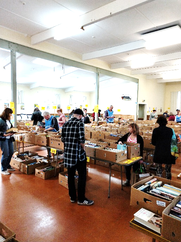 St Vincent de Paul Last month the St Vincent de Paul Society in the parish celebrated Mass for its members and supporters. The Society of St Vincent de Paul is an international Catholic lay organisation inspired by the Gospels of Jesus Christ. This is a ground-roots organisation whose members and volunteers have been helping countless families and individuals for more than 150 years. Vincentians work in a caring and practical manner to promote human dignity and justice through personal contact with those in need, hence the motto, People Helping People. The Society mission is to help people in crisis, comforting them and assuring them that their burdens are not meant to be carried alone. In giving thanks for the great work of the Society in our parish we also give thanks for the great vitality it brings to our parish. $1,800 was raised last month for disaster recovery in India in a province associated with Fr Tony of ICPE fame who used to live in our parish. Also, last month the St Vincent de Paul book fair was a great occasion, raising over $5,000. The steady stream of people coming into St Anne’s Hall and going out with an armful of books was proof that people still read! 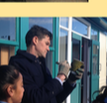 Mayor’s visit Holy Cross School welcomed Mayor Justin Lester and chef Steve Logan to the Garden to Table programme. They showcased the skills and knowledge the students need for lifelong learning. In all areas of the school students are given the opportunity to develop the Key Competencies- these are the skills to communicate and collaborate as a team. Justin and Steve were very impressed with our students and talked about how important these skills are in the students future careers. 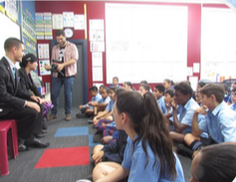 Rotorua win Earlier this year St Patrick’s won air flights to Rotorua for our year 6,7 and 8 students. The children are very excited about this trip and will be visiting Rotorua to explore Te Puia, where they will study geysers, mud pools, Maori art and culture, as well as attend a concert. After this they will attend the Agrodome farm show, followed by a visit to Rainbow Springs, exploring NZ bird life and finally a ‘Big Splash’ water ride. The interweaving of these experiences will allow the opportunity for an awareness of how special places unite, connect and sustain people with their spirituality, essential to keeping the soul of their culture alive. For our Maori students it will provide an opportunity to be proud and identify with values that are important to them. Air New Zealand are also filming the children’s adventures to promote their school projects, so the next time you fly keep an eye out for St Patrick’s School. St Anthony's Mass brings students, parents and grandparents together They sang and they laughed. Then coming back from communion to I’m Going to Let it Shine one girl began to clap in time, soon everyone was clapping in time. While we all have the same deep need to worship we all have different ways in which that need is satisfied. While some people need silence and stillness, others need activity and flamboyance. Fr Ephrem speaks of the importance of variety in our liturgy across the parish so that there is room for everyone. In this spirit the students, staff and friends of St Anthony’s came together on a Sunday at 4.30pm last month. There was Mass as usual at 10.30am but at 4.30pm it was over to the school students to celebrate in their own way. Accolades to Jenny O’Brien who had decorated the church to reflect approaching spring. There was a spring banner at the front of the church and the pews were decorated with flowers. The feeling in coming into the church was that something different was about to happen. Equal accolades to John Ashby who led the singing group. Music can set the tone. Together the singing group lead with gusto and everyone there responded by joining in. Director of Religious Studies Denise Johnson says people have a lot of different commitments in the week. It’s not so important when we celebrate Mass, more that we do celebrate it, 4.30pm is a time that works for most parents. She is keen to have Mass at this time each term. The students wrote the prayers themselves. There was deep reverence in their prayer. The prayers were a reminder that when we get together as families and as a parish family it is different to all the other things in our life, we connect with each other and with God. Our worries and distractions fade away and the love that is God is all around. Denise along with Principal Jennifer Ioannou are excited about this break from tradition and what it adds to our faith community. Future 4.30pm Masses might include a BBQ afterwards so people can get to know one another better. Fr Lindus Clovis is a priest of St Lucia in the West Indies. He holds a doctorate in mathematics, but his great love is Mary and her advocacy for us all.Speaking at St Patrick’s early this month he recounted how the Spanish were only able to break through and convert the Aztecs, taking them away from their hardened blood sacrifices, with the help of Mary. She worked with an Aztec convert and together they founded a chapel that led to many miracles, not least the conversion of ten million Aztecs to Christianity. Fr Lindus’s main message was that Mary wants us to be with God for all eternity. She knows that we have free will and, in that knowledge, foresees what is ahead and advocates for us. She does not hesitate to intervene to lead us to her son Jesus. What's a parish manager? The advertisement is out for a new parish manager. This is an uncommon role in New Zealand parishes. A search found only four across the country. Here’s their advice on what we should be looking for, in their own words. Margaret von Hartitzsch, Pastoral Co-ordinator, Napier (first photo) Parishes are busy places. They need a point of co-ordination. The most important part of my role is providing a common point of contact. Maggie Cooper, Parish Administration and Pastoral Co-ordinator, Tauranga (second photo) Below are the duties related to the Pastoral aspect of my job: Coordinate involvement of parishioners in:
The "person specifications" for the Administrative Role are:
The Parish has recently also employed a Pastoral Assistant (11 hrs p/w) , her main role is to visit parishioners, and coordinate Holy Communion to be taken to the sick and homebound. Magey Hamilton, Pastoral Co-ordinator, St Heliers It’s been very interesting thinking about the role of a Pastoral Co-ordinator. I have been in this role for 16 years, and when I look at the original job description it bears little resemblance to what I do! The number of Pastoral workers in our diocese has dwindled to just a few of us now but, when there were many, we used to gather as a Diocesan group 4 times a year for sharing and education, and I noted that we all had a different role. Some were more like Office Administrators, some were Sacramental Co-ordinators, others were involved with the sick and elderly, others Youth Ministry etc. Only 2 or 3 were in a general role like mine. So, it seems that we are what is needed in our parish. St Ignatius Parish in St Heliers is smallish and generally middle-class. It is full of young families so has a real mix albeit mainly Pakeha with a small Tongan community and a smattering of many other ethnicities. Our priest, John Dunn works on a Community Model of Church and so we are very much part of a team and, while he is the leader, he doesn’t rule. This makes for good and healthy working conditions and consultative decisions. My role has developed into a supportive and mentoring role with oversight of most of the groups. It used to involve co-ordinating the Baptism and Sacramental Programmes but that became too big so we employ someone especially for that role. I am not on the Parish Pastoral Council but submit a report each month and mostly attend the meetings. Something I was required to set up from the outset was regular supervision. So, I see a Psychotherapist who is also a Spiritual Director monthly. I am a strong supporter of this as I believe it has enabled me to stay in this job for this long. Some priests have this too and find it very beneficial as we are often dealing with parishioners in difficult situations. I think that one of the most important attributes is someone who has empathy and is able to meet people where they are at. I also help families to prepare funerals. Fr John and I work together in this capacity. Another string to someone’s bow would be some Theology training. I haven’t had that background except for one off courses over the years. And here’s what Fr John added The qualities that have been so important in this role have included: - Ability to listen attentively without pre-judging - Ability to welcome people so that they feel at home in the parish - Ability to work with the parish priest, and creatively find ways to exercise ministry with him or around him - Good group skills and corresponding ability to carry out what was decided - The gift of ‘letting go’ so that others are greatly enabled to enter into ministry (this in contrast to a dominating presence with pre-conceived ideas that dominates and frustrates the People of God’s right to participate at all levels of parish life). Correspondingly, a great gift of encouraging people to ‘have a go’ and enter into active participation in the parish. In terms of faith, a passion for the Gospel, a love of the Word of God, and of God’s people. In terms of knowledge, the willingness to study and learn for the good of the people. In terms of self-critical self-awareness, a commitment to regular, professional supervision. Stephanie Grantham Parish Co-ordinator, Palmerson North (and previously Parish Manager at St Anthony’s) (third photo) Being the Parish Manager at Seatoun and now the Parish Coordinator here at the Cathedral Parish, has provided me with a wonderful and challenging role and a role that is definitely never boring. 😊. When I started as the Parish Manager for St Anthony’s, my only experience with parish life was that of a parishioner. I had grown up in Seatoun and was privileged to experience a vibrant engaged community and that was the foundation of how I wanted to grow the parish again. Having St Anthony’s school next door to our beautiful church gave me an opportunity to engage with the children and their families and work closely with the Principal and Director of Religious Studies. I believe one of the best initiatives that Fr Sanele and I facilitated was to increase the use of the church space by the school community. It was an opportunity for the children to really make the church their parish home, to respect the space and to grow their faith, creating a living parish. The role for a Parish Manager / Co-ordinator includes matters that relate to the ministries and pastoral care of our community, the day to day life in the Parish and items /concerns raised by parishioners and members from the wider community. I see the most challenging areas of this role is how to engage with the various ethnic communities within the parish and how to weave together 3 individual parishes and make it a shared parish. Identifying influential and enthusiastic parishioners within those groups is key to getting them engaged and involved. Here in Palmerston North, we have started some new initiatives over the last couple of years and when setting them up and running of them, I consistently talk about the Catholic community of Palmerston North, not the Catholic community of the Cathedral Parish. I encourage our parishioners to bring parishioners from other parishes to join in – the “Blokes Morning Tea”, our Shining Stars pre-school music group and others. The same could apply to the Holy Trinity Parish. Our parishes here in Palmerston North still operate independently. Our future is an exciting challenge, being inclusive, positive and forward thinking will be our foundation to build upon. My strengths are, being organised, empathetic and focused on the pastoral care of our parish, our community and our people. It’s OK to have new ideas, making them reality is a lot harder. Your Parish Manager needs to be able to identify who are the right people, getting ‘buy in’ is critical and having to make some hard decisions when you know they are the right decision for your parish. A very big positive in the Trinity Parish would be the interaction of not only three primary schools, but the two secondary schools. What an amazing advantage to have so many engaged people willing to bring your parish to be the best that it can be. RECENT TITLES AT THE PARISH BOOK CLUB:
Pope comes to Holy Trinity Parish by video and letter Last month Pope Francis was a regular presence in our parish, albeit by video. Pope nights at Holy Cross staffroom, St Anthony’s Gascoigne Room and St Patrick’s meeting room where great occasions for hosting Pope Francis on video. From footage of lightening striking the Vatican dome on the resignation of Pope Benedict, through to the miracles the new pope has performed and the Synod on Family, the videos showed an active Pope with an ability to communicate age old messages in new ways. Themes of the papacy of Pope Francis The name Pope Francis chose is very important to understanding his mission: he has embraced the mission of Francis of Assisi: to “rebuild” the Church in the sense of a spiritual reform that has God at its centre. One of the main messages of Pope Francis is the centrality of mercy. He is displaying mercy in his actions and words. The remarkable effect he has had on the non-Catholic world shows the power of this message. It is not that Pope Francis is seeking to strip us of our commitments to critical social causes like abolition of abortion or commitment to marriage and family, but that he wants us to move these important things to their proper place. To illustrate this, we can imagine a target with concentric circles and a centre bull’s-eye. The bull’s-eye would contain the single most important thing, and each ring out from the centre would reflect things that are in degrees of descending importance. This is at the heart of what Pope Francis is calling us to: He’s asking us to focus on the message in the centre of the bull’s-eye: “God created you for one purpose, an eternal relationship of love with Him.” Pope Francis wants us to lead with ‘yes’ – rather than with ‘no’. When we lead with ‘no’, our messages and means of communication not only fail to advance the cultural causes we care about, but they also are destructive to the souls of those who are not yet convinced that we have anything to say to them. Gaudete et Exsultate - Rejoice and be glad The theme of the latest papal letter is the call to holiness in today’s world. Pope Francis calls us all to be holy – he asks us to be inspired by the saints next door. We are all called to be holy by living our lives with love and by bearing witness in everything we do, wherever we find ourselves. According to Pope Francis, some characteristics of holiness in the current world are: patience and meekness, humour, courage and fervour, community life, and constant prayer. A woman who raises her children, a man who works to bring home the daily bread…this for me is ordinary holiness. We should not look to a perfect life without errors, but people whose lives may not always have been perfect, yet even amid their faults and failings they kept moving forward and proved pleasing to the Lord. This is a very personal letter written to each of us. As the Tablet put it holiness has come to…mean one of two things: either being so unwordly as to be hardly on the planet at all, or to have assumed an air of spiritual superiority that disdains lesser mortals more subject to the temptations of the flesh. In his audacious new apostolic exhortation Pope Francis has embarked upon a very personal definition of holiness that breaks through these blockages and turns these preconceptions upside down. Most Catholics would shy away from imagining holiness either as applying to themselves or as a serious aim in life and are probably not comfortable with being thought of as ‘religious’. Yet the call to holiness is universal, and the practice of it should be as natural and familiar as any good habit. The parent who cares lovingly for a child, the carpenter who deftly repairs a damaged wardrobe, the owner of a business who behaves honourably and conscientiously towards staff and their customers, indeed anyone who aspires to become the person God means them to be, is engaged in becoming more holy by virtue of it. Holiness is not remote from everyday life. It is the very stuff daily life is made of. Anyone can be a saint. The Pope’s letter is a remarkable document and could be regarded as this Pope’s spiritual masterpiece. A thousand sermons could be preached on it, and everyone in the congregation would instantly sense that the Pope is talking to them personally. There are two common problems we have in the Church – belief in our own intellect, and belief in our own will. The first problem is believing that because we have received certain information, we fully understand the will of God; the second problem, that we can save ourselves by our own actions; we end up worshiping our own abilities, rather than trusting God. Both problems are similar, because they seek to control our encounter with God, and they both display pride and a lack of trust in God - The spiritual experience of the encounter with God cannot be controlled. The path of holiness asks that we keep our lamps lit, as those who do not commit serious failures against the Law of God can nevertheless fall into a state of dull lethargy. This can lead to a corruption that is worse than the fall of a sinner, for it is a comfortable and self-satisfied form of blindness. Everything then appears acceptable. Discernment, then, is…an authentic process of leaving ourselves behind in order to approach the mystery of God, who helps us to carry out the mission to which he has called us, for the good of our brothers and sisters. Many thanks to Patricia O'Donnell for last month’s article on the influenza epidemic of early last century in our area including the story of Sister Chanel Burton. Thank you this month to Sister Judith Moroney for sharing her reflection on what being a Sister of Mercy has meant to her, first shared at Mass at Holy Cross on Vocation’s Day. Sister lives in our parish and spends much of her time in work connected with the Mercy leadership 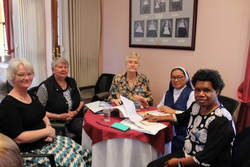 Sister Judith Moroney (far left) with other Mercy Sisters from around the Asia-Pacific region Thank you Father Gregory for this opportunity to share my experience of call in my life as a Sister of Mercy. We are all called by God, both in our everyday lives and living, and in our life vocation. For me that is as a sister in Nga Whaea Atawhai o Aotearoa, Sisters of Mercy, New Zealand. When I was younger I had always believed I would work, get married and have kids. I remember the tension within me when my call was to something different. But, I knew I could never be at peace until I tried it out and I’m still here and very much at peace with that choice. This call to follow Jesus, to live the Gospel in a particular way and to be inspired by our Foundress Catherine McAuley who was both prayerful and active in helping and empowering the poor in Ireland, knowing God’s mercy in my life and wanting to share God’s mercy with others, has led me into many privileged experiences. Before I joined the Mercies I was a primary teacher and I continued in that, along with Reading Recovery for many years. I have taught secondary school. I have been involved as a spiritual director, in retreats and child care during prison visiting hours. I have been bursar and involved in new membership within the Congregation. I have lived a few years in both Tonga and Samoa and been in primary and secondary teaching and teacher development there. I am now on the leadership team. And yet I know there has never been anything I “do” in religious life that I couldn’t do outside it. The call has been in making Jesus central in my life, being part of a congregation whose members share my vision and motivation and who support me in this privilege to live out my vows of celibacy - loving freely, obedience – listening deeply to God, the world and earth; and poverty – living simply. Trying to live whakawhanaungatanga - right relationships with God, self, others, earth and those who have walked before us and given witness. Maybe you, your son or daughter, niece or nephew, granddaughter or grandson is discerning his or her direction and vocational call. For some this may be in religious life or priesthood. Let us keep those who are discerning their path in life in our daily prayer, that they may make the choice that will give them deep fulfilment by living where they are called. In any vocation - marriage, single life, religious life or priesthood, there will be ups and downs. But when we are living deeply where we are called by God, we will find that deeper peace. That peace and knowing that is there no matter what difficulties there are. That is how we find true happiness and fulfilment.
Holy Cross - This term we will have a health focus with our theme ‘Confidence in Thyself’. Students will be reflecting upon their personality and how their actions affect others. This will also cover themes of
relationships and inclusiveness. Students will also develop an understanding that our actions shape us as a church. For physical education, students will be engaged in Run, Jump and Throw developing techniques used in athletics. A club for people that like reading or want to get back into it What happens on the last Sunday night of each month? The parish book club. Suggested by Julian, the very first book club was lead by Allan. A dozen parishioners gathered. To get things rolling they shared brief details of what they have been reading. Michael finds that most of what he reads is on the internet. It’s immediate and pretty much everything is there. If you have an interest or question, through web-sites and videos a mass of material is easy to find. Theresa reads the Gospels. With Chinese as her first language reading in English is not always easy. However, reading the Gospels, Theresa feels the presence of the Holy Spirit. The Gospels come alive on the page. Across the book club there are thriller and murder readers, history readers and papal document readers. The comment was made that with so much written about our faith it is hard to sift through it all to find what speaks to us. Julian had generously bought a host of books that have spoken to him. Books that have been a complete joy in the midst of hard times. Books that have opened up new revelations. Is there a book that has stood out for you as pure inspiration? Maybe there is a book that has challenged you. Share what you’ve been reading at the parish book club. Or, maybe it has been a while since you had a really good read. It is interesting to hear what other people have been reading, reason to get back into reading. Feel free to join in on the book club. It is held on the last Sunday of each month at 6pm, after Mass, at Holy Cross.
HOW TO WRITE A HOMILY Fr Paul comments that the biggest part of his week can be preparing his Sunday homily. He aims for 900 words and ensures it is tightly timed. The Catechism talks of the magisterium of the pastors of the Church in talking on moral matters. In preaching there is an emphasis on illuminating theology and spirituality to ensure that from generation to generation the guidance and virtues of our faith in Christ are passed on and that we continue to be drawn to charity. Of all his work as a priest Fr Paul finds preaching a highlight. No homily will please everyone. In passing the faith on from generation to generation some try to dress it up, others try to skirt around the sides almost hiding its truth in order to find popularity. Fr Paul likes to go straight to the point of the Gospels. He doesn’t see the need to dress up or skirt around, he aims to hit bulls eye every time. Some people like a quick Sunday Mass, some people are in no hurry and don’t want anything rushed. Fr Paul asks people to think about how they use their time during the week. Giving an hour a week to Sunday Mass and being open to whatever it might deliver might not be so hard. Before leaving for New Zealand Fr Paul was told that his ministry would be one of maintaining the faith. Having been here for a year he says it has been different to what he had been expecting. There is much opportunity to grow the faith. Like a good knife, we need to keep our faith sharp and we need to use it regularly, least it become blunt and rusty. KID'S SECTION Do you like to read? Here are some great books you might like to try. Occupations - The pictures in this book for each saint are full of hidden clues about the saint. Read about the saint and what they did then find the clues to learn more about them. The book will help you see in the lives of the saints what sort of job you might like to do. Lion Treasury of Children’s Prayers- this book is great way to pray with mum and dad. Good times to pray with them are before going to school, dinner time and bedtime. The Beginner's Bible - this version of the Bible has all the great stories of the Bible with helpful pictures. It is easy to read and will get you thinking about all sorts of important things REMEMBERING THE INFLUENZA PANDEMIC 1918 was the year of the Influenza Pandemic. This is the same illness in several countries at the same time. In May a new strain of influenza swept through Europe. It was called the Spanish Flu because, in May 1918, King Alfonso XIII caught the Flu and became seriously ill. It was international news. He survived his illness but the label stuck. The second wave reached New Zealand at the end of September, early October. A number of people, mainly school children and the elderly, caught a weak strain of the Flu. Military camps and boarding schools were the most affected. There were few deaths and the patients generally recovered after a week’s illness. The Wellington Mayor John P Luke approached the Health Dept for advice as he wanted to prepare the city in case the flu got worse. The Health Dept told him it was none of his business. Then came the third wave of the Flu in early November. This wave was much more serious. On 8th November there was a premature announcement of the Armistice and in many towns people gathered to celebrate. Then on 12 November the real armistice was celebrated with dancing in the streets all over the country amid large spontaneous crowds of revelers. New Zealand was experiencing an unusually cold and unsettled Spring. November 12th was cold, windy and showery. So coughing and sneezing in crowds was common. These were fertile grounds for spreading the disease. People who caught the Flu became very ill very quickly though it appears that those who had caught it earlier had immunity to this wave. The patients suffered headaches, a high fever often to 104 degrees, sweats, chest pains and coughing. Many of them experienced long nose bleeds and then recovered. Others developed delirium or pneumonia which led to death. If people in a house were ill they hung a white cloth, usually a towel, at the front door or at the gate as the sign that help was needed. Scouts answered this sign to hear what was needed. Adult Volunteers then delivered medicines or groceries or soup from the Soup kitchens set up to feed the sick. Where possible, volunteer nurses went into the homes of local people who caught the flu to nurse the patients and care for the families. Many volunteers became victims. The best treatment was to give aspirin, keep up fluid intake and frequently sponge the patients to lower their fever. Many single men in boarding houses died without help. Wellington was in great difficulty. Many doctors and nurses were serving in the war. The Health Minister G W Russell and senior members from the Dept of Health had gone to Auckland where the Flu hit first to see what was happening. Many GPs were the first to get sick. Dr Matthew Holmes had been at Gallipoli. He was invalided home and worked as a GP here. He died at 42 having worked himself to collapse. Dr Barclay the Superintendent of Wellington Hospital began preparations to cope but was one of the first to fall ill seriously. Dr Watt, the senior Ministry of Health officer here was also very sick. Wellington had no medical leaders. GPs and their nurses went from patient to patient travelling all over the city. The town Hall became the centre to dispense cough medicine and prescriptions were filled there. Temporary hospitals were set up in Wellington such as the one at St Patrick’s College in Cambridge Tce. This hospital was set up in the boarding school premises after the Marist priests had sent the students home. Here volunteer nurses cared for the seriously ill patients, 40 died. The same system was used at Wellington College where 82 died. The Public Hospital was overwhelmed by patients. The high density pop meant increased flu spread. Hairdressers, tram conductors, shop assistants caught the flu quickly. People who recovered were wobbly and shaky and weak for weeks and needed a long convalescence. On 12thNovember the Government ordered all schools, offices, pubs, exhibitions and movie theatres closed as a precaution against spreading the disease. Inhalation chambers were set up round the city. These helped public morale but were useless in fighting the disease. Cough mixture was popular because it had alcohol in it and pubs were closed. Here in Kilbirnie Sr Mary Chanel of St Catherine’s began her work in the epidemic by visiting the local homes where people had the flu. When St Patrick’s hospital opened she worked there, walking there and back each day. In November, while nursing flu victims there, she caught the flu and died on November 30th.. Her death was described in the NZ Tablet newspaper as ‘she fell victim to overstrain brought on by her strenuous labours to alleviate the sufferings of influenza victims. On Thursday she suffered heart failure and pneumonia set in. She died at 11pm on Saturday’. Sr Chanel was buried at Karori cemetery after a solemn Requiem Mass at St Patrick’s Church in Kilbirnie at 9am. Sr Mary Chanel was born in Ireland and emigrated with her parents to Marlborough. There she attended the Sisters of Mercy convent school in Blenheim before becoming a nun. She was a Sister of Mercy for nearly 30 years, teaching at Lower Hutt, Newtown and Kilbirnie schools and had been in Kilbirnie for seven years. She was known as a sympathetic woman who was always ready to help those in distress and sorrow. In October and November the death rate in Kilbirnie and Lyall Bay was 15.6% with a population of just 2,237 people, the highest death rate in the Wellington area. How did the dangerous Flu reach New Zealand? In late October the Niagara docked in Auckland. The Prime Minister William Massey and Finance Minister Sir Joseph Ward were on board returning from London. The ship stopped in Vancouver and San Francesco in late September before the Flu arrived there, Honolulu for a day but no flu there. By the time the ship got to Suva there were 83 mild cases on board, mainly crew. Three days out from Auckland the Captain reported 12 serious cases. It was suggested the ship be quarantined but the Health Dept said no as flu was already rampant in Auckland. Passengers dispersed throughout the country. Most of the sick passengers had recovered so passengers were just sprayed as they disembarked. Twelve crew were isolated in hospital. A week later 3 crew died but they were not the first deaths in Auckland. Many people later blamed the third strain on this ship’s arrival. But 2 large troopships also arrived that week and hundreds of returning servicemen went home to all parts of the country. The troopships’ arrival was not publicised because of wartime restrictions. It is possible that many of the returned servicemen carried the Flu with them. Here in New Zealand nearly 9,000 people died in 6 weeks. Those least likely to catch it were children 5 – 15 years old. The most likely to catch it were adults 20 – 45 with the highest number of deaths in the 25-34 age bracket. The total number of European New Zealanders who died was about 6413, the Maori deaths totalled about 2160. Six hundred and five soldiers in New Zealand camps died and an unknown number of NZ soldiers also died overseas. These numbers are approximate as not all who died of the Flu had that as a cause on their death certificates. Shops finally opened in mid December. Schools didn’t open till February. This was an event that altered the population of New Zealand for ever. The next 25 years It is a mark of the man that he opened celebration of 25 years of dedication to spreading the word of God in fluent Maori. At the recent combined faith community mass to celebrate Fr Ephrem’s 25 years of vocation, the prayers of the faithful where in a great many languages of the Pacific and Asia. As a missionary priest in a corner of the church that has known confidence only to lose it in a sea of confusion and self-doubt, Fr Ephrem’s 25th celebration was testament to his ability to find and foster the future church. Sharing lunch with all the faith community afterward was testimony to his generosity to all that he meets. He is not a man to judge and rule over others. He is a gentle man who is humble and open, he invites us to the love of God of which he is sure. In the history of the Church St Paul used the Roman’s roads to spread the message. In the middle ages the monasteries where sanctums from which the word spread. We had become used to missionaries following the conquering ways of the Portuguese, Spanish and French. In this new unchartered epoch, the new world is coming to the old world, finding it stepped in materialism, far from the Jesus of the Gospels. Perhaps what we saw most strikingly in Fr Ephrem’s 25th jubilee celebration is that the faith community has changed. Flanked by his fellow priests, who’s lives have crossed many times, Fr Ephrem presided over a truly multi-cultural faith community. The strength of devotion from our Philippino members, the service of our Indian members bolstered by the presence of sisters of St Teresa of Calcutta who joined us from Porirua, the power of the Tongan and Samoan communities singing, veneration of our Maori members, acknowledgment of the wisdom of our Italians. These and other national backgrounds are the beauty of the new faith community that is emerging. So, we look forward to the next 25 years of vocation from Fr Ephrem. In his celebration he has not only shown us what we are becoming he has challenged us as any good missionary would do. It is up to each of us to understand that we are part of an inclusive faith community that welcomes all people. That we bring our national identities to celebration, but we are not celebrating those identities we are celebrating Jesus and the sacrificial and redemptive love that will change the face of the old world. THANK YOU BRENDAN St Vincent de Paul crusader, Brendan Quirk, is a fine example of individual people within the faith community concentrating on what is important for the future and empowering others to be part of it. Brendan brought together a group of our faith community last month to collect for the St Vincent de Paul food bank which feeds over 3,800 people a year. The collection at Countdown Kilbirnie, collected 74 filled boxes of groceries and $358 in cash donations. These supplies will again substantially boost the SVDP Foodbank at Newtown, so timely with winter upon us. Last month’s collection is right up there since Seatoun and Miramar Conference took on the six-monthly collection in November 2013. Last year our collections were 71 boxes/$270 cash and 75 boxes/$280 cash respectively. It all adds up over time, as since Nov 2013 we have collected 520 filled boxes and $3,051 cash for the foodbank, truly putting your faith into action. May Brendan’s wonderful example help us to see what it means to be part of our broad a and loving faith community, that we might play our role in it. THANK YOU JENNIFER AND DENISE A member of our faith community put their hand out for Eucharist at week day Mass in great relief. Surrounded by a storm of catastrophe they were in the one place they could rely on. They were with Jesus, Jesus was with them. They could carry on breathing. We go to Mass when times are good so that we know we are fully integrated with it when times are bad. As Fr Ephrem puts it: our faith is watered and grows with each raindrop. Gentle rain over time is what we are looking for not some flood of storm that washes everything away! Last month principal of St Anthony’s Jennifer Ioannou and religious studies leader Denise Johnson lead a discussion on what it means to have Eucharist in our community. One of the strongest messages is that we are neither parish nor school, together we are faith community. The Eucharist is Jesus amongst us, he will work the miracles we long for. The conversation lead to some very practical discussion. There is an open invitation to our priests to be present at all religious education in our schools. Through this our children will get to know our priests and our priests will get to know what is on the minds of our youngest members and what they respond to. From this is a desire to have special Masses during the year for special groups in our faith community. One suggestion is that we have Masses specifically for our families on occasional Sunday afternoons. Families can then celebrate the Eucharist and share in community in ways that speak to the challenges of being a family and all that is entailed. Eucharist is a fundamental form of prayer where we consume Jesus and he becomes through no other thought or action part of us. We don’t have to pass a test or pay a ransom, we open our mouth and he is within us. This deepening relationship with the creator and protector of all things becomes a fresh spring of continuing prayer. There is a strong desire to set up a prayer chain in our faith community. We can then pray together in support of one another. Times may get tough but through gathering for Eucharist and the many ways we find to pray we are in support of one another. There is opportunity for mutually enriching partnership. Denise gives examples of faith at work at school... St Anthony’s in 2017 have been learning that we all have a responsibility of belonging to our faith community and are called to take action to care for our common home. We are a sign of God’s love when we look after our environment inside our buildings and outside in the playground. In Kiwi, which is the class of our little people, we noticed that the junior corridor was always messy with rubbish, lunch boxes, food and clothing all over the floor. It didn't look good, especially when we had visitors. So, we decided to do something about it. We talked about respecting our belongings and respecting our environment. We came up with all the ways we could keep our corridors tidy and clean and how it can be sustained over the term and the year by all classes. The students understood how blessed they are to have a fantastic school and that other students in the world aren't so lucky so it's our responsibility to take care of it. In Hoiho, a class of more senior students, our focus has been on how we can look after our community by attracting native birds into the school garden and making our garden bird friendly. As part of this we wrote letters to supermarkets asking for donations of peanut butter and birdseed to make birdfeeders. New World kindly replied offering us what we needed. Some students from Hoiho went down with Miss Shanks to New World to collect peanut butter and birdseed. We would like to thank Ana Vegar-Hammington for her generosity in donating these items to us. Making the feeders and putting them up around the school was fun for everyone. By making the birdfeeders we are doing the work Jesus did by helping to look after the birds in our school environment. Our challenge is to sustain a way of feeding the birds after this term is over. We think we have made a great start to looking after some of God’s creations that we find at our school! We were able to share our knowledge of Native Birds with a school in Costa Rica. WHAT IS POPE FRANCIS REALLY SAYING TO US? With many bogus announcements on social media it is easy to miss the true message to us from this extra-ordinary man. We have collected together some amazing video footage of what this man is actually saying to the world in his own words. Come and experience these wonderful videos:
Pope Francis’ most recent work is called Laudato Si. This will be covered in the evening. In Laudato Si Pope Francis’ asks us to “REJOICE AND BE GLAD” (Mt 5:12), Jesus tells those persecuted or humiliated for his sake. The Lord asks everything of us, and in return he offers us true life, the happiness for which we were created. He wants us to be saints and not to settle for a bland and mediocre existence. The call to holiness is present in various ways from the very first pages of the Bible. We see it expressed in the Lord’s words to Abraham: “Walk before me, and be blameless” (Gen 17:1). In Laudato Si Pope Francis does not try and set out a treatise on holiness, containing definitions and distinctions helpful for understanding this important subject, or a discussion of the various means of sanctification. He says ‘My modest goal is to repropose the call to holiness in a practical way for our own time, with all its risks, challenges and opportunities. For the Lord has chosen each one of us “to be holy and blameless before him in love” (Eph 1:4)’. Not everyone can handle the simple messages of faith Pope Francis has for us. Don’t be swayed by people that are providing their own version of what he is saying. Come and hear Pope Francis’ own words. KIDS PAGE
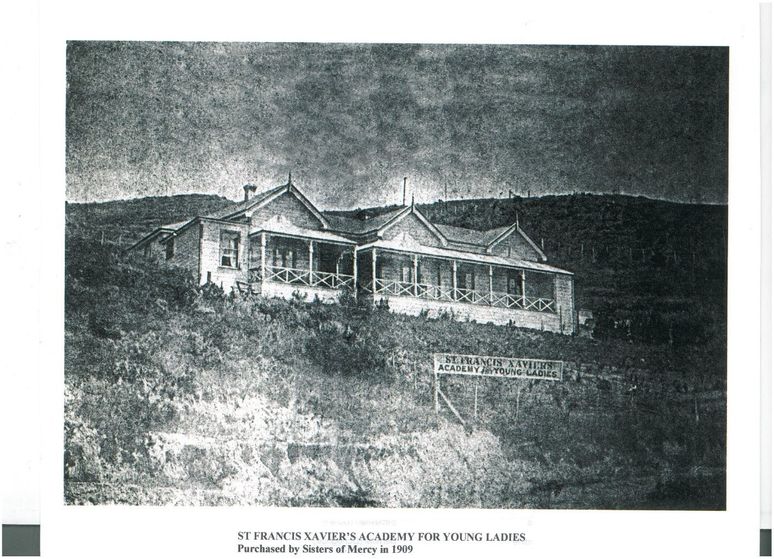 Over 100 years of mercy and wisdom in our parish There is a group of women living in our parish who have established our schools and grown them to what they are today. They have done this so that everyone has access to a great education. Education that gives young parishioners a good start in life. These same women have quietly, without any one knowing, made sure families in the parish that are going through hard times don’t go hungry. These same women get around and talk with people who might not otherwise have people to talk to. These women living with us are known as the Mercy Sisters. They started ministering simultaneously in two areas in the parish over 100 years ago. Carrying their books and things for the day regardless of the weather, the early Mercy Sisters would walk over to Kilbirnie from Newtown. In Kilbirnie they would use the combined church and school building to teach the local parish children and care for the local families. A woman who had originally been a Sister went out on her own to establish a Catholic school for girls, St Francis Xavier’s Academy (picture above), in Seatoun Heights. When in 1909 her venture got into difficulties the Sisters purchased it to open Star of the Sea Preparatory College for boys. In Kilbirnie there was a large wooden building which stood on the hill overlooking the village, where St Catherine’s College Coolock Block now is, which Catherine Bourke, the wife of Mr M F Bourke had acquired. She had it transferred in 1917 with its mortgages ‘in natural love and affection’ to her niece Agnes Bourke, a Mercy Sister, for use as a place for the Sisters to live and base their work. Parish Schools in Seatoun and Miramar followed. Today’s Sisters are based in Athens Street, Miramar. Their current ministry in our parish includes the continuing development of St Catherine’s College and looking after families in need. Mercy Sisters seek to live the Gospel of Jesus by engaging in the works of Mercy, according to the charism of their founder Catherine McAuley. Together with their companions in mission, their vision is for a world where God’s generous love and mercy are experienced by all. Catherine McAuley founded the Sisters of Mercy in Dublin, Ireland in 1831. From these small beginnings sisters and their companions in mission now work in more than 40 countries worldwide. Sisters of Mercy were the first religious sisters to come to Aotearoa New Zealand arriving in Auckland on 9 April 1850. They came in response to a call from wāhine Māori. From 1850 to 1897 four Mercy Congregations were founded in Aotearoa. On 12 December 2005 the four Congregations of Aotearoa united to become a single Congregation – Nga Whaea Atawhai o Aotearoa Sisters of Mercy New Zealand. This decision was inspired by the Sisters’ desire to become ‘a new creation for mission’ and underlines the truth that faithfulness to God’s mission means openness to the future and change. Catherine’s vision of a world transformed by God’s love was fired by her deep conviction that she and her colleagues could make a difference to people’s lives. While each Mercy ministry has its own specific focus, it will include some or all of the following: · Service to the poor - Catherine’s unique gift was to draw wealthy and poor into a mutually enriching partnership. Mercy is called to stand with the vulnerable, working to transform society by linking need with resources. · Care of the sick and dying - The first ‘walking sisters’ nursed victims of Dublin’s cholera epidemic a year after the Congregation was founded. Today Mercy is especially committed to those who are very sick and old, combining compassionate care with professional skills. · Empowerment of women and girls - Catherine recognised education as the key to improving life for women and their families. Mercy education is aimed today at empowering women in the search for a more just and sustainable world, and at equipping them for leadership in all fields of human endeavour. · Advocacy - Enlisting the aid of people with power and influence was one of Catherine’s strategies for achieving change. Mercy is committed to speaking on behalf of those on the margins of society, and to joining with other voices in calling for constructive change. · Commitment to Te Tiriti o Waitangi - Catherine’s sisters went only where they were invited and stayed only as long as required. It was in response to the karanga from Māori that the Sisters of Mercy first came to Aotearoa New Zealand in 1850; today that response endures in a strong commitment to the Treaty of Waitangi and to creative partnerships with Māori. · Care of the Earth - Catherine’s spirituality enabled her to see God’s presence in the whole of life. Today Mercy is committed to preserving the integrity of creation, seeing human beings as connected with and dependent on all other living species. The Sister’s do not hold back in standing up for people in need. They are a gutsy, hard working group of determined women. Last year the entire body of students from St Catherine’s gathered at Parliament, joining with Sisters and supporters, asking for better housing for people on lower incomes. Mercy schools and communities from around the country contributed to a series of Shelter for All books. Each book has stories, pictures and poems reflecting the need for action against homelessness. These are not books so much as a gallery of people’s lives condensed and from the heart. Catherine’s insistence that the “poor need help today and not next week”, calls us to respond in compassionate way. We cannot fix the whole world but we can stretch out to mend the part that is within our reach, one person at a time. All young women in the parish seeking to follow Jesus in adventure at the edge of society where things aren’t always ordered and predicatable are invited to contact the Sisters in Mirarmar. Ring Sister Stephanie on 027- 2458859 or email [email protected] When you contact them you will find that they will be interested in you and what you want to achieve. Don’t be under any illusion - these are hard working women because they are ultimately working for justice. They will want to discuss with you whether you are ready to make a real difference for the better, in the world. After a time of exploring what you would like to contribute you have the option of living in one of the Mercy communities. From this you will get a sense of what it is to help people that are struggling and in need not next week but in the immediate moment. When you confirm that this is the way you want to live your life you apply to become a novice. This is a two year commitment of study and prayer. If this goes well you can take first vows that mean you are ready for five years of deep reflection, growth and grace-filled joy. At the end of it are final vows and the tasks ahead! GOOD FRIDAY On Good Friday many gathered to carry a cross through Seatoun to the beach and back. They paused along the way at significant places, including other churches, for Stations of the Cross. At Seatoun beach everyone present was asked to gather stones from the beach to make a cross on the footpath. People passing through the day and into Easter will have seen the cross of stones. Signs of Christianity such as us walking with a cross and the cross of stones at the beach help people to know that God is with them. Have you thought about what signs you show and leave behind in your daily work? WHEN IT'S HARD TO PRAY It’s true, praying is not always easy. When we find it hard we can go to Mass and in the Eucharist we eat Jesus and in a physical way He becomes part of us. This makes it easier to talk with Him and we find ourselves praying. The Parish Prayer Group meets at 7am on Mondays to pray for our parish and parishioners. They rotate between the three churches of the parish. After they have finished praying they go to a nearby café for breakfast. When it’s hard to pray, it can help when other people pray for us. The Parish Prayer Group would be pleased to pray for you and your needs over the coming month. Just send a text to Dave on 027 447 7280 or Kim on 0222426288. Send a name and a brief word description (no detail necessary) of what you would like prayed for. KID'S PAGE This old lady is Mother M Bernard Redwood. As a Sister of Mercy she lived on the hill above Seatoun in the early 1920s, way before mum and dad were born. See if you can answer these questions about her and the Mercy Sisters. The first person handing in the right answers to the parish office gets a book voucher.
Are you ready? · What are the clothes that Mother Bernard is wearing called? · What sort of people wear these clothes? · What is special about these people? · Do they wear the same clothes today? · What work do these people do today in our parish? · Where do they live in our parish? · How do you go about joining them in their work? Now for a really hard question. If you get this right you won’t only get a book voucher but you will also get a very chocolatey bonus prize. · Mother Bernard Redwood was related to a famous person in the early history of Wellington, do you know who that was? If you meet a Sister of Mercy carrying on Mother Bernard’s work in our parish, say hello to them. You can ask them what they do and offer to help. HOW WOULD YOU HAVE RESPONDED? In driving rain a truck is in front of you. Unable to get out of the way the unthinkable happens. Fifty-six days later you wake up from a deep coma. Physical movement is hard. Even speaking is a challenge. For the following thirty years unable to work, you live a very different life to what you had expected. What sort of person would you become? Parishioner Mark Gardiner faced these ordeals. He is a faith filled person with a warm and generous spirit. For him there is but one response. He is grateful. Talking to Mark at his home surrounded by photos of his family, he talks with love and gratitude for his wife and joy for what their eleven children have achieved. Pressed hard he is emphatic in his gratitude for the cross he has been given to carry. In Mark’s words “suffering is a part of life, everyone has a cross to carry, we don’t get to choose the shape or weight of it. It is given to us and when we carry it with faith it becomes a positive not a burden in our life.” In the words of Matthew 5:16, let your light shine so people will get to see how good our Father is. With a growing family and successful business everything was ticking along nicely for Mark. When a friend introduced him to St John Paul on the Pope’s visit to Wellington, Mark was in awe. Little did he know that only a year later his family would be keeping constant vigil at his hospital bed. Nor, that the friend that introduced him to St John Paul would have the Pope making a personal prayer for Mark’s recovery. But, these things happened and Mark emerged from coma, alive but disabled. Today, Mark goes to Mass every day, praying the Rosary through the rest of the day. He is a contented man, happy to share his faith with others. In fact, he says having a disability draws empathy, making it easier to talk about and share faith. Given the same circumstances, how would you have responded? JOIN MARK IN PRAYING THE ROSARY The Rosary is made up of groups of significant events or moments in the life of Jesus and Mary. The first contains joyful mysteries; the second, the mysteries of light; the third, the sorrowful mysteries; and the fourth, the glorious mysteries. You don’t have to pray it on your own. Join the Rosary group at St Anthony’s prior to weekday Mass or join Virtual Rosary on You Tube. These You Tube videos will invite you to join others praying on line. CHANGE If you’ve been driving through Kilbirnie over the past few weeks, many of you will have noticed the security fencing and signage on parish property indicating that work has begun on preparing the former presbytery building for demolition. The process is going well so far and the actual demolition of the building is now underway with the team being mindful of those living, praying and working nearby. For most of us we will have been confronted by this visible sign of change in our parish. While the change will be bringing back memories of past priests and activities, no doubt the change will be making us think of our aspirations for the future. For some of us it will be simple, a place to park closer to Mass or a reflective garden in which to sit and pray. Fiona D’Souza, Director of Religious Studies, St Patricks Primary School, has made the following observations: Ever since I joined the school a number of years ago, I’ve been very aware and very appreciative of the commitment of the Parish to ensure our Parish and school work together wherever possible. The Church of New Zealand, too, understands the vital role schools now play in the role of the Church and promotes the close relationship of parish and school. It has been wonderful to see the Parish be so open to the needs and well-being of our students and going to great lengths to nurture the students’ faith, supporting and initiating involvement of the students in Parish activities; involving students by encouraging artwork for the church, sending parishioners in to the school to speak to the assembly about Parish ministries, having parish council members run a parenting course in the school for our parents, having parishioners help run the school breakfast club, sending a person in to write articles for the Parish magazine, having parishioners to help at the school’s ethnic food fair, allowing the school to have a key to allow easy access to the church for prayer and learning about the church, parishioners donating shoes for students in need, etc Recently, I attended Mass in the Parish and was very concerned to hear the planned developments for the land becoming vacant with the demolition of the presbytery bore no mention of the school. I would like to offer some thoughts from our staff about the plans for the use of the land to ensure the development benefits the Parish and people as best possible. I believe the new space provides a fantastic opportunity for us to head in a similar direction as the new parish centre of Our Lady of Kapiti whereby the Church, hall and school are all being built together on the same land. This will make for a thriving space which promotes the unity of Parish and school. It seems to make sense that the land be used as much as possible to the benefit of the parish and her people. I do appreciate the need for additional parking. During the week days instead of sitting largely idle it would be wonderful to see the parks and garden utilised by the school students who are very much in need of more space. I wonder whether it would be feasible to consider a slight revision to the plan such as the removal of the brown wooden fence separating the school and the parish. This could open up the space so that Church and school are not separated and would allow the new space (tarmac and garden) to be accessed by the school children, with the understanding on the occasions the space is needed it would be available for Church activities. The Parish can be very proud this school is not only thriving but is noted in Wellington Catholic Education for the rapid growth in recent years. The growing roll is really exciting! Having more students means the size of the playground has become problematic. Apart from the increased number of students, having re-capitated (adding intermediates) and having the older, bigger students is another reason for extra space. Unfortunately, in the last year or so there have been more accidents in the playground due to the shortage of space. We are all fully aware of the benefits of physical activity and outdoor time, for physical, mental and spiritual health. In addition, we are very conscious of our responsibility to ensure the Health and Safety standards which are not only a professional obligation but also a moral duty. Many of our students live in high rise council flats, with limited play space so, even though the space in our playground is very limited, the students are so desperate for space to run around they often stay at school well after the end of school bell has rung. Allowing the students the use of the soon to be created space would enable the students to exercise and enjoy the benefits of playing outside with less risk and more safety. It just seems so sad to have the land empty during school days when it could be used by the young people in such desperate need of it. HOLY THURSDAY
KIDS PAGE
During the month we will mark the life of St Laurence. Do you know what day we will do this? Do you know where to find the saint of the day? Try Goggling it and see what you get. Like other saints St Laurence didn’t live a normal life and he certainly didn’t die a normal death. St Laurence was braver than most people. He stood up for what he believed to be right. When people where against him and put him to death, he didn’t change his mind. St Laurence worked in the Church and looked after its treasurers. When the King at the time demanded that he give over the treasure of the church, St Laurence handed over what he felt was the real treasure of the church – the poor, the widowed, the sick and disabled. The King saw wealth in a different way, he demanded gold and worldly treasure. The King was so mad that he decided to slowly burn St Laurence to death. As he burned, St Laurence didn’t yell out saying that he thought the King was wrong, nor did he yell out for someone to save him. Instead in defiance to the King and his bad ways he simply said that one side of his body was cooked and if he was turned over he would cook on the other side. This is how St Laurence died. He died holding to what he knew to be right. He died confident that the life after this one would be better. **** Congratulations to last month’s winner Gerard Sullivan who won a $20 book voucher for his answers in our Lent competition. Presbytery farewell A small group of parishioners gathered on a recent Saturday morning in the garden of St Patrick's with Fathers Gregory and Philip for a commemorative and thanksgiving prayer service before the Kilbirnie presbytery building is finally demolished. They recalled and prayed for all those priests, religious and lay people who have lived, worked and been ministered to in the area over the years from 1929 - 2012. They remembered the service given by the presbytery building. The land the building is on was bought in 1881 by Archbishop Redwood as a seaside lot, (the seashore being just across the road) big enough for a presbytery and church. He realised that Wellington would grow and in the future there would be a large population living in this area. The purchase of this land would help ensure that their spiritual needs would be met. From 1908, Mass was said regularly in a hall in Kilbirnie Cres and parishioners began to fundraise for their Church. In 1910 the first St Patrick’s Church was built. In 1919 St Patrick’s Parish was formally established with Fr Connolly as parish priest and Fr Michael Griffin as assistant. The scope of this “new parish” was Kilbirnie, Miramar and Seatoun! The presbytery in Childers Tce was built, then opened and blessed by Archbishop O’Shea in 1929. Many Diocesan priests lived and ministered in the parish until 1996. Then the Capuchin Friars were invited to come in from the Northland/Wilton area. In 2012 The Archdiocese informed us that the building was deemed unsafe for living, meeting and working in. After many lengthy consultations and processes it is to be demolished, but the land retained for possible future use. It is planned that the area where the building currently is will become a parking space for people using the Church and that the garden area be retained and developed further to become a restful and reflective space. The Capuchin Friars have fortunately remained with the merger and development of our Holy Trinity Parish and are now living in Miramar. And speaking of Miramar…. …AND SPEAKING OF MIRAMAR Two great and faithful parishioners were sitting after Mass talking about property issues in the parish. They noted that some parishoners were concerned that a decision has been made on the Miramar Church. Andrew Gunn, Chair of the Parish Council and Nick Crang, Chair of the Finance Committee, advise all parishoners that no decisions on the future of the Holy Cross Church have been made. They say that the Finance Committee has engaged an engineer to report on the steps that would need to be taken to improve the earthquake rating of the church. That will then be costed. After that, the options for the future development of the parish properties will be developed and then consulted on with parishioners. Parishioners will recall that they were initially consulted at the end of 2016 on initial options following the work of the property sub-committee (which operated under the Finance Committee and Parish Council). At the time, it was signaled that further consultation on the options would occur, after the results of the initial consultation had been digested. Nick says the consultation raised many issues and made the Finance Committee realise how complex the issues are. The other thing that came through was the strong connections that many people have to our buildings . One of the other things that we realised after the initial consultation was the need for the Parish Council to develop parish objectives, to help us through the property planning process, Nick comments. Andrew Gunn said that those objectives were developed in 2017. “The Pastoral Council, outlined that from a pastoral perspective we see both St Patrick’s and Holy Cross sites as both holding strong but diverse strategic value. However, we acknowledge that the Holy Cross building has many unknown cost, planning, space re-development and structural issues, not the least it’s current 21% NBS or earthquake rating. We asked the Finance Committee, as a matter of urgency, to start the investigation required to establish the cost of strengthening of the Holy Cross Church to a compliance level whereby the whole Parish including Holy Cross School can once again enjoy this church. Nick Crang and his Committee have been working hard to secure a firm to commence these costing works. Given the recent earthquakes in the region and wider, the reality is that structural consultants have long waiting lists of clients. This work will commence in April.” Nick acknowledges concerns about lack of information. He says that this had come about through delays in the anticipated process, rather than from information being withheld. “We have been working as hard as we can on property issues, but we ask Parishioners to recognise that they are complex issues to work through”. Nick notes that “We have heard parishioners requests to receive full information on the Holy Cross Church. We will ensure that happens as part of the consultation process. We have always intended for the property planning process to involve the whole parish and for parishioners to feel, at the end of the day, that they have been involved in the process. It is important that all voices are heard”. WITH SIGNIFICANT PROPERTY ISSUES AHEAD, LET US PRAY Let us pray for wisdom Proverbs 24:3-4 By wisdom a house is built, and through understanding it is established; through knowledge its rooms are filled with rare and beautiful treasures. James 1:5 If any of you lacks wisdom, let him ask of God, who gives to all liberally and without reproach, and it will be given to him. Let us pray for provision Exodus 25:1-2,8 Then the Lord spoke to Moses, saying: “Speak to the children of Israel, that they bring Me an offering. From everyone who gives it willingly with his heart you shall take My offering...and let them make Me a sanctuary, that I may dwell among them. Exodus 36:2-7 So Moses summoned Bezalel and Oholiab and all the others who were specially gifted by the Lord and were eager to get to work. Moses gave them the materials donated by the people of Israel as sacred offerings for the completion of the sanctuary. But the people continued to bring additional gifts each morning. Finally, the craftsmen who were working on the sanctuary left their work. They went to Moses and reported, “The people have given more than enough materials to complete the job the Lord has commanded us to do!” So, Moses gave the command, and this message was sent throughout the camp: “Men and women, don’t prepare any more gifts for the sanctuary. We have enough!” So, the people stopped bringing their sacred offerings. Their contributions were more than enough to complete the whole project. What does the Catechism say about prayer? We learn to pray at certain moments by hearing the Word of the Lord and sharing in his Paschal mystery, but his Spirit is offered us at all times, in the events of each day, to make prayer spring up from us. Jesus' teaching about praying to our Father is in the same vein as his teaching about providence: time is in the Father's hands; it is in the present that we encounter him, not yesterday nor tomorrow, but today: "O that today you would hearken to his voice! Harden not your hearts." Prayer in the events of each day and each moment is one of the secrets of the kingdom revealed to "little children," to the servants of Christ, to the poor of the Beatitudes. It is right and good to pray so that the coming of the kingdom of justice and peace may influence the march of history, but it is just as important to bring the help of prayer into humble, everyday situations; all forms of prayer can be the leaven to which the Lord compares the kingdom. 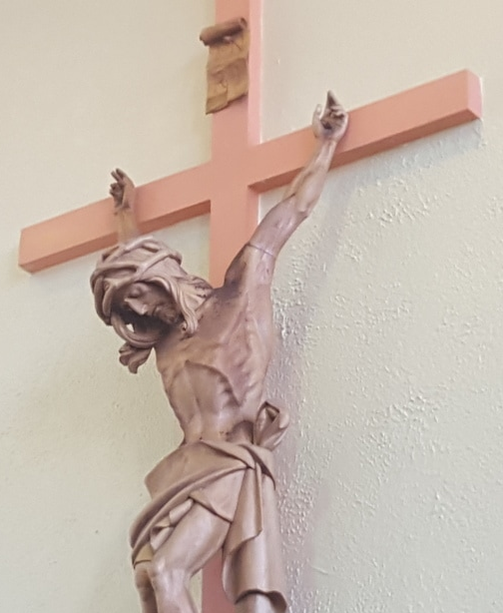 Easter worship As Easter approaches we will be thinking about whether we will be here or away on holiday. For those of us that will be around over Easter there will be many great opportunities to join in worship. To start our worship with a clean slate be sure to join the parish Lenten reconciliation on Wednesday 28th March at St Patrick’s at 7pm. Be rid of all those things that have been cluttering your mind and activities. The following day is Holy Thursday there will be no morning Mass at any of the churches, at 7pm at St Patrick’s there will be Mass of the Lord’s Supper. This Mass began in late fourth-century Jerusalem, where it became customary to celebrate the events of the Passion of Jesus in the places where they took place. In Rome at that time a Mass was celebrated at which penitents were reconciled with a view to participation in the Easter celebrations. The washing of feet that is now part of the Mass of the Lord's Supper was in use at an early stage without relation to this particular day, and was first prescribed for use on Holy Thursday by the 694 Council of Toledo. When Good Friday comes we follow the Stations of the Cross or the key elements leading up to Christ’s crucifixion in procession. There will be three processions in the parish. We will be joined by sister churches in the processions.
Solemn Commemoration of the Lord’s Passion will then take place at all three parish churches at 3pm. After solemn reflection of Christ dying on a cross and what it means for us we come to Easter Day. This is a day to enjoy Easter eggs. The egg is an ancient symbol of new life and rebirth. In Christianity it became associated with Jesus' crucifixion and resurrection. The custom of the Easter egg originated in the early Christian community of Mesopotamia, who stained eggs red in memory of the blood of Christ, shed at his crucifixion. As such, for Christians, the Easter egg is a symbol of the empty tomb. The oldest tradition is to use dyed chicken eggs, but a modern custom is to substitute chocolate!
|
SHARINGIf you have news and views to share please email them to: [email protected] Archives
December 2018
Categories |
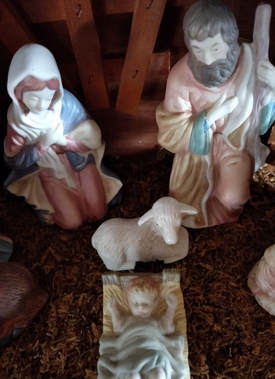
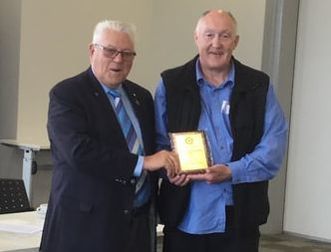
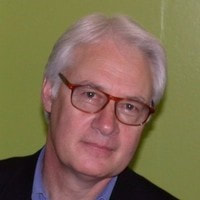
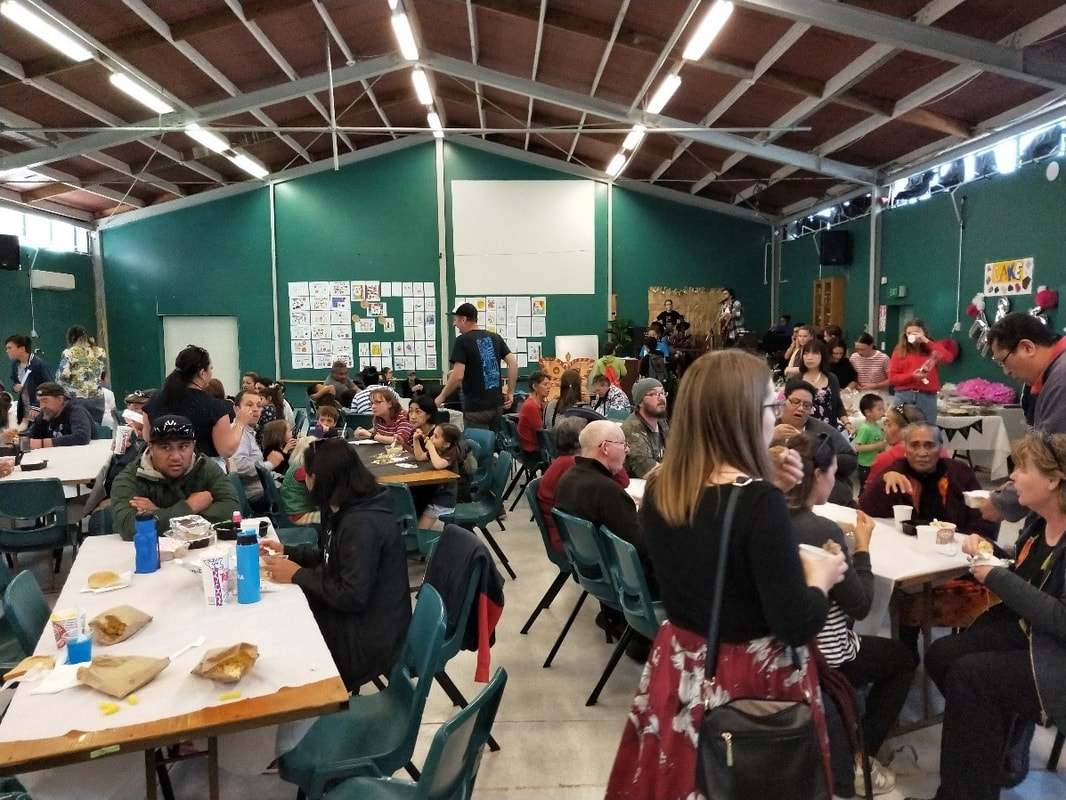
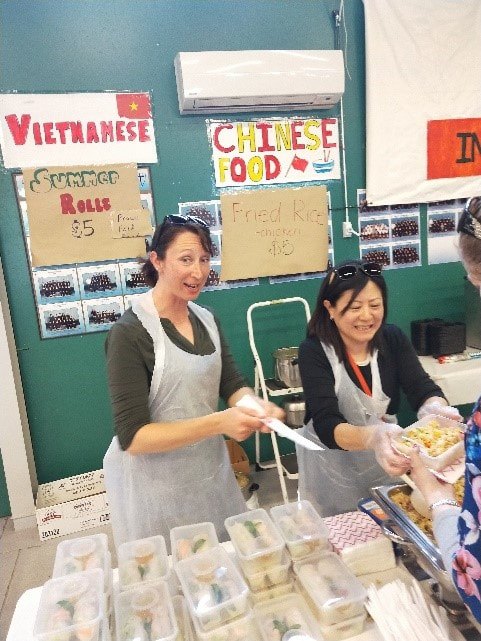
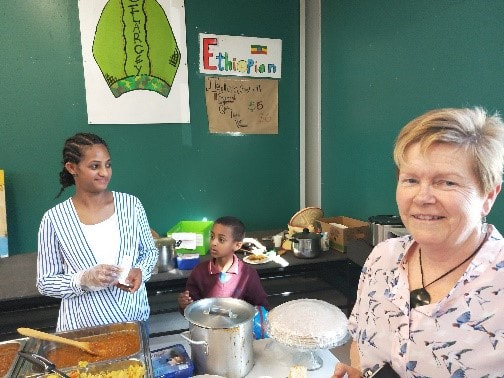
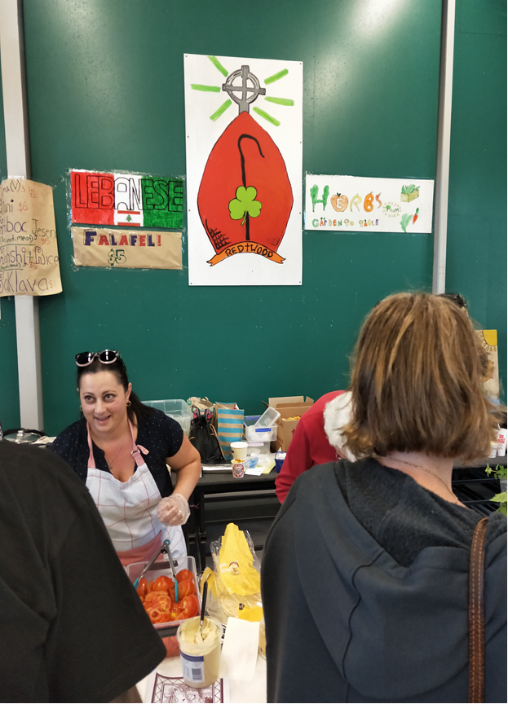
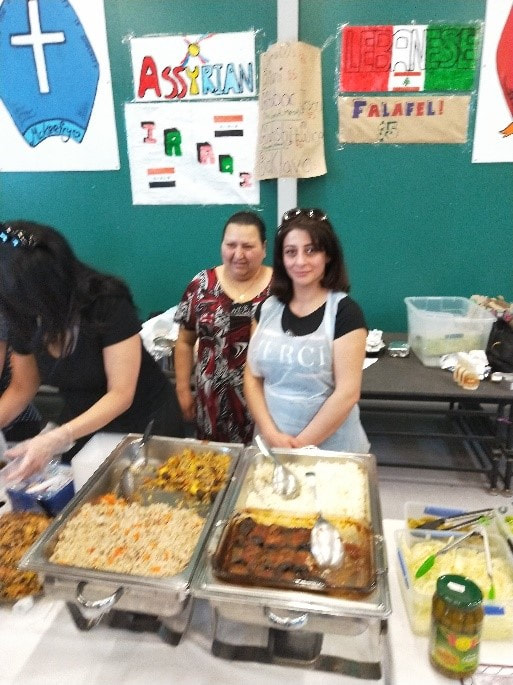
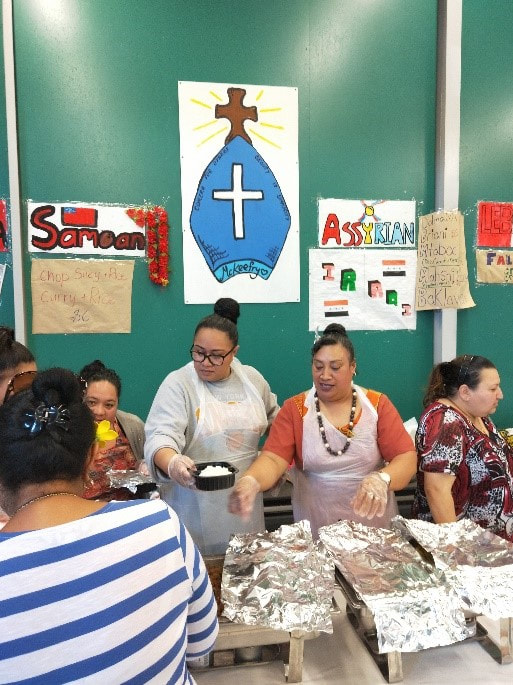
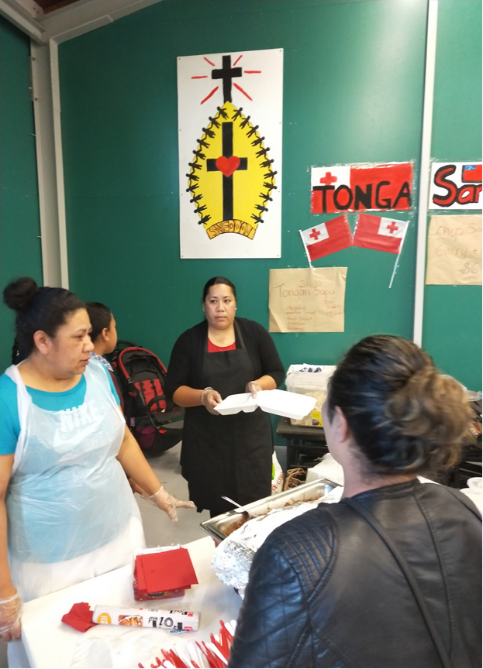
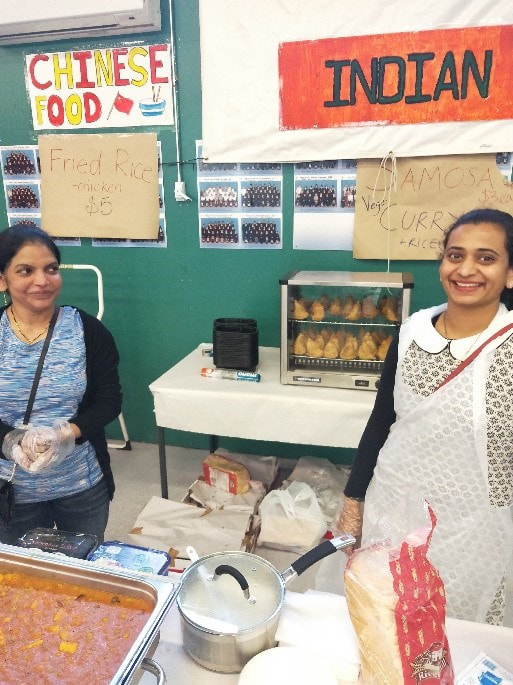
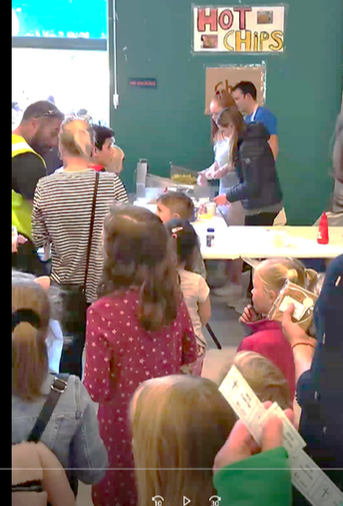
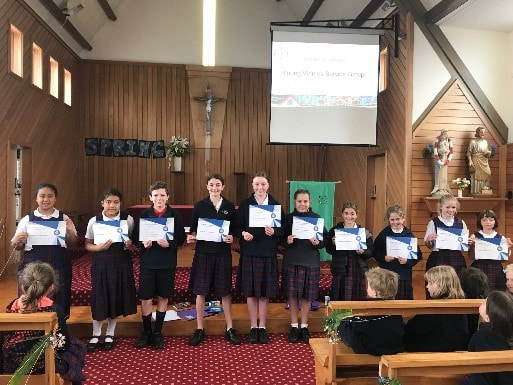
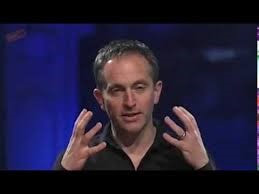

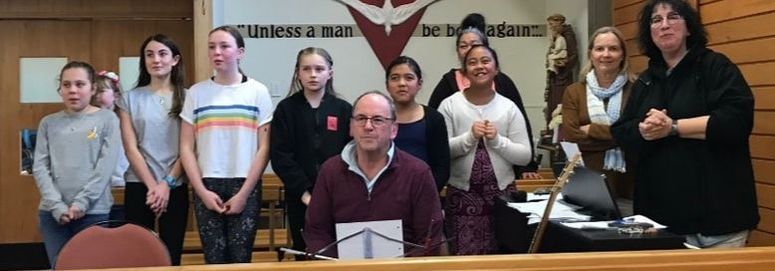
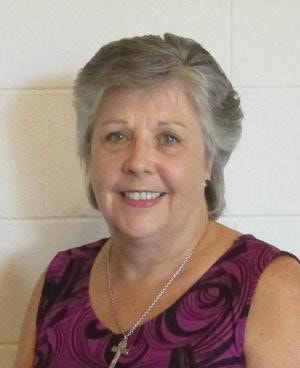
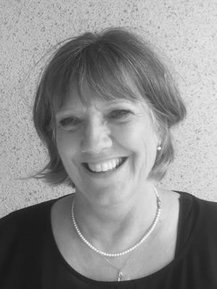
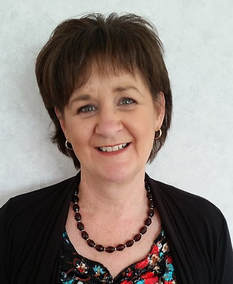
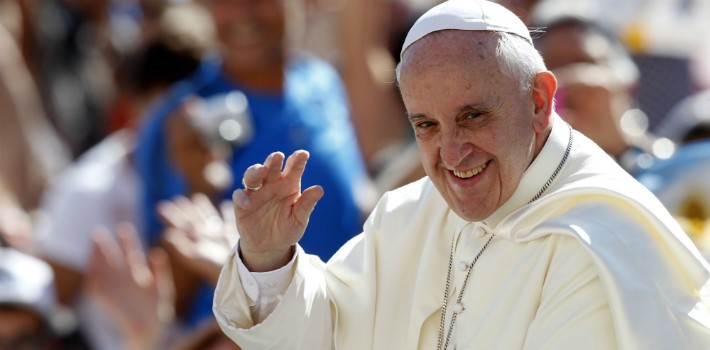


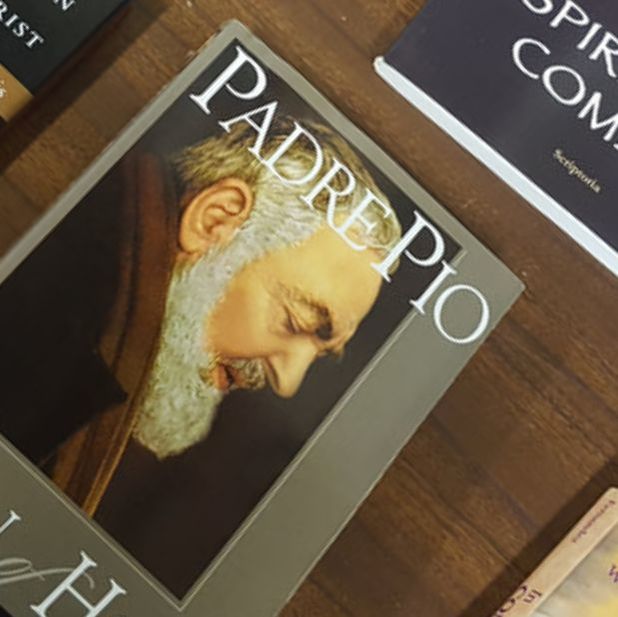

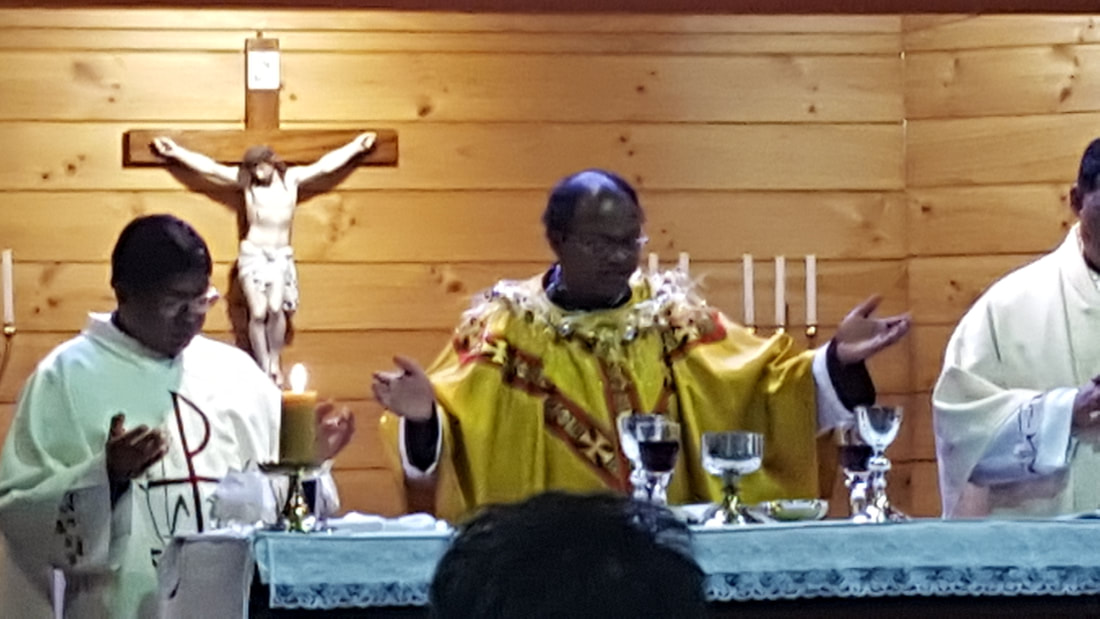
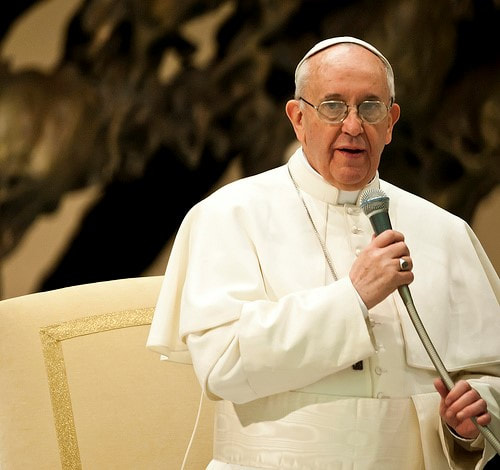
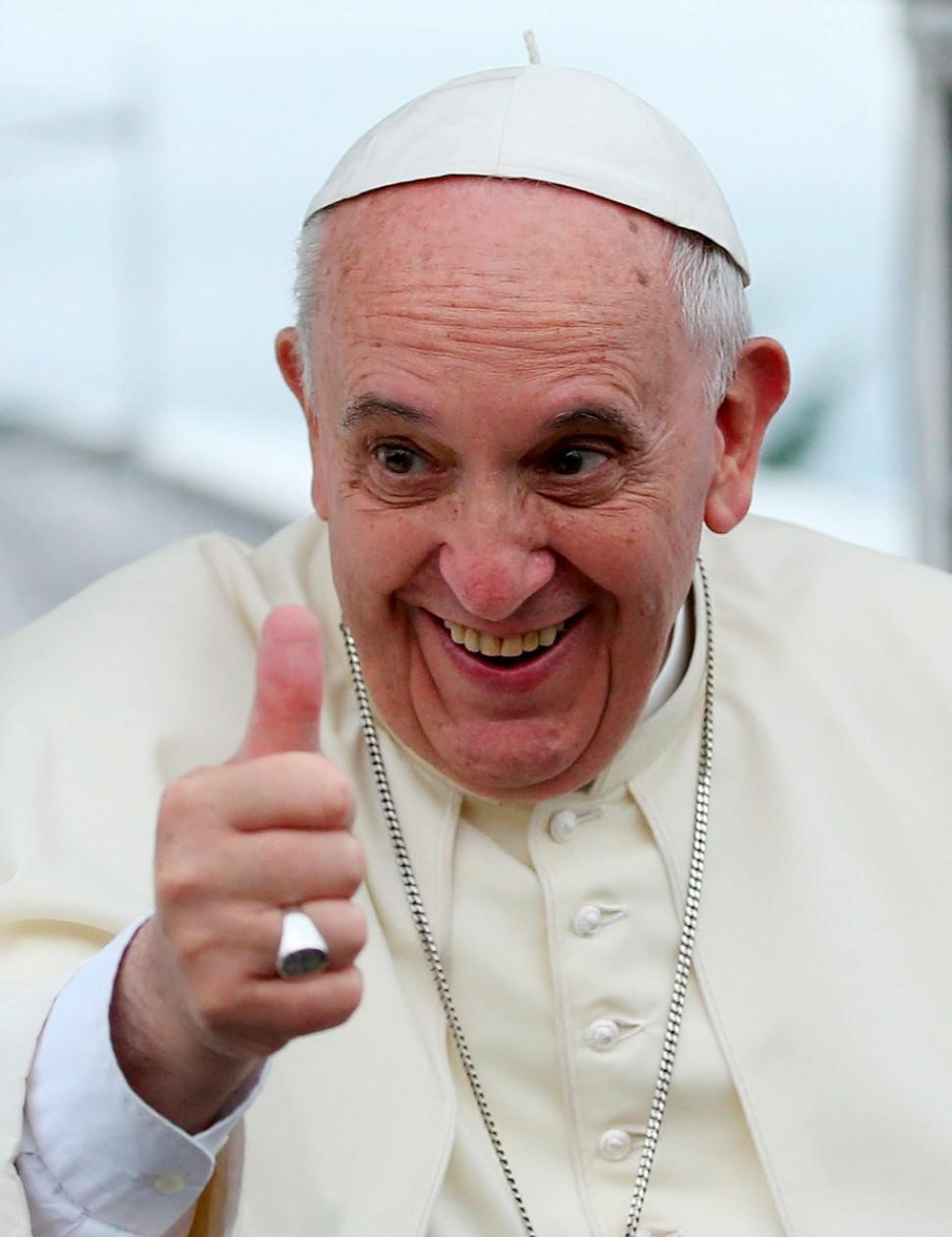
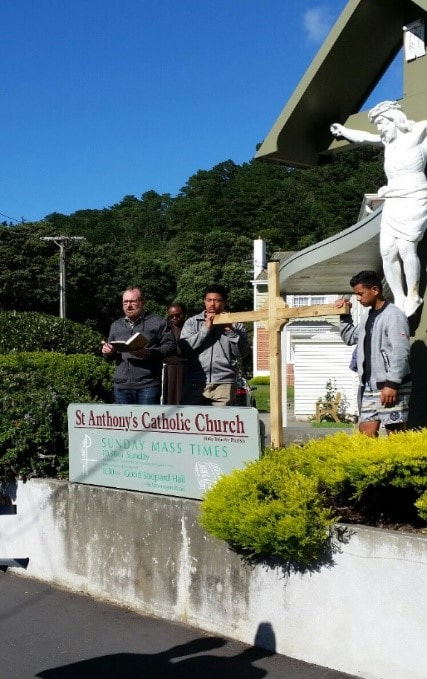
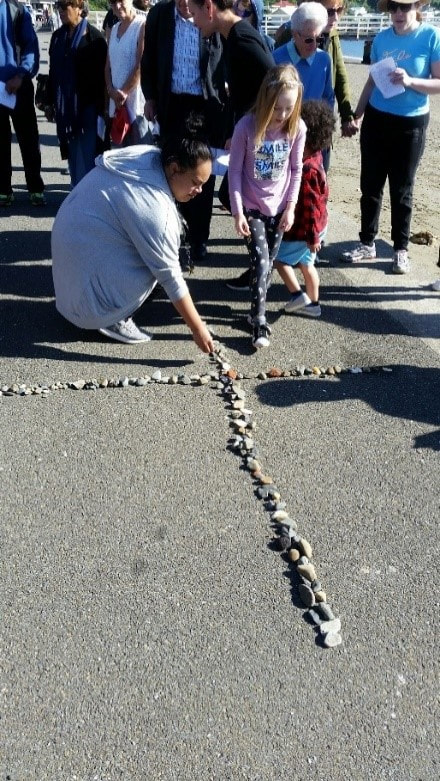
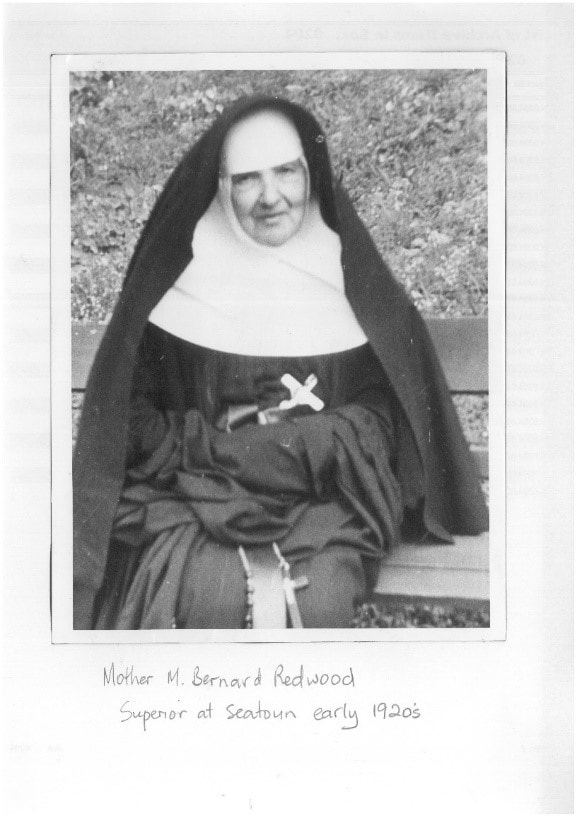
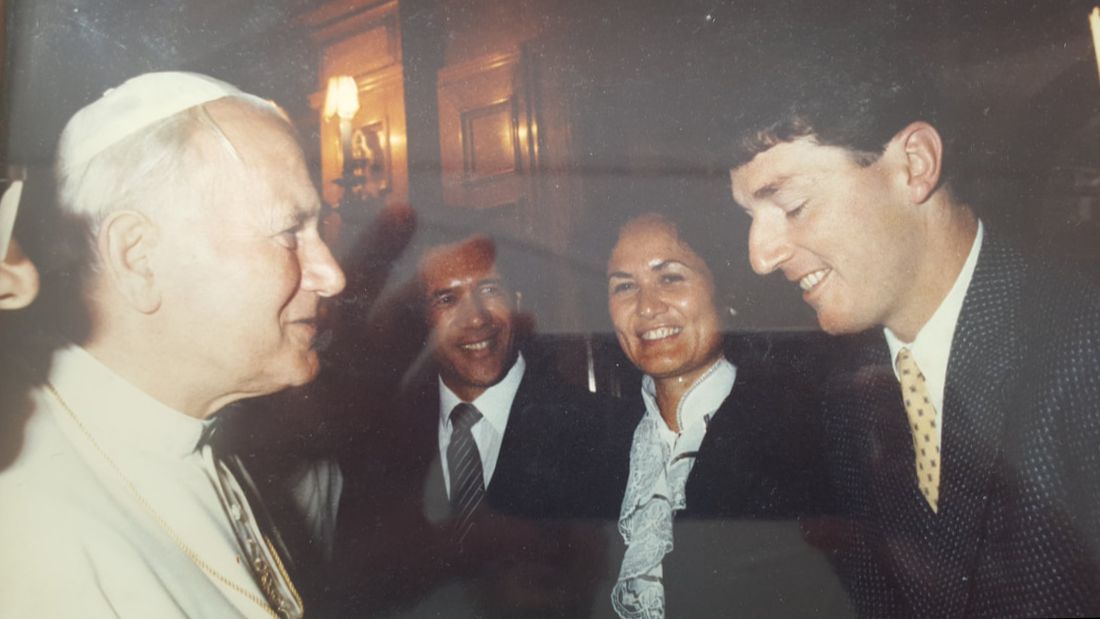
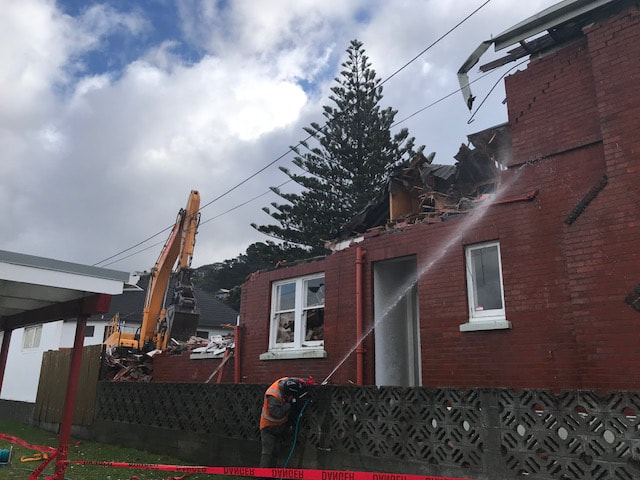
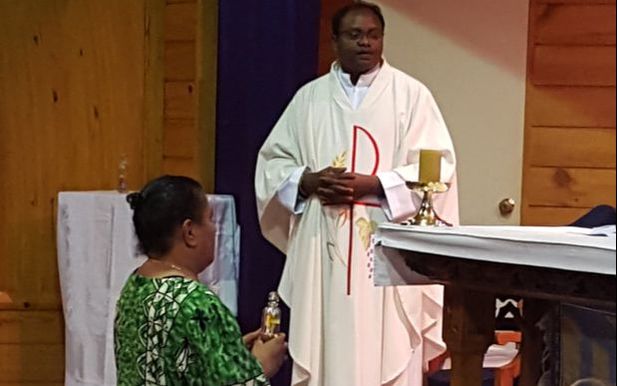
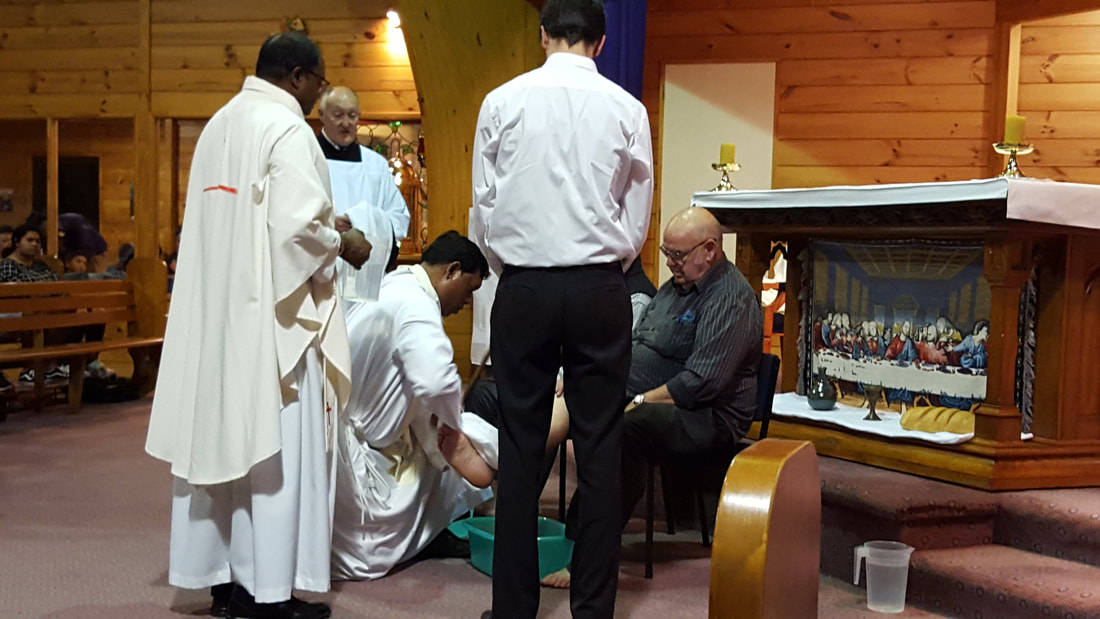
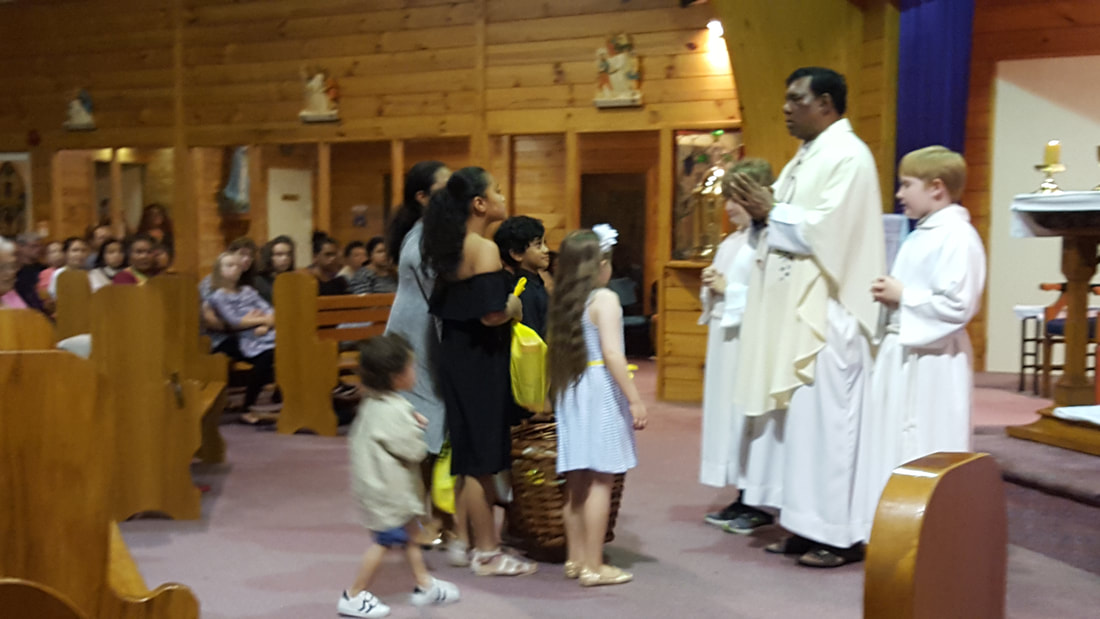
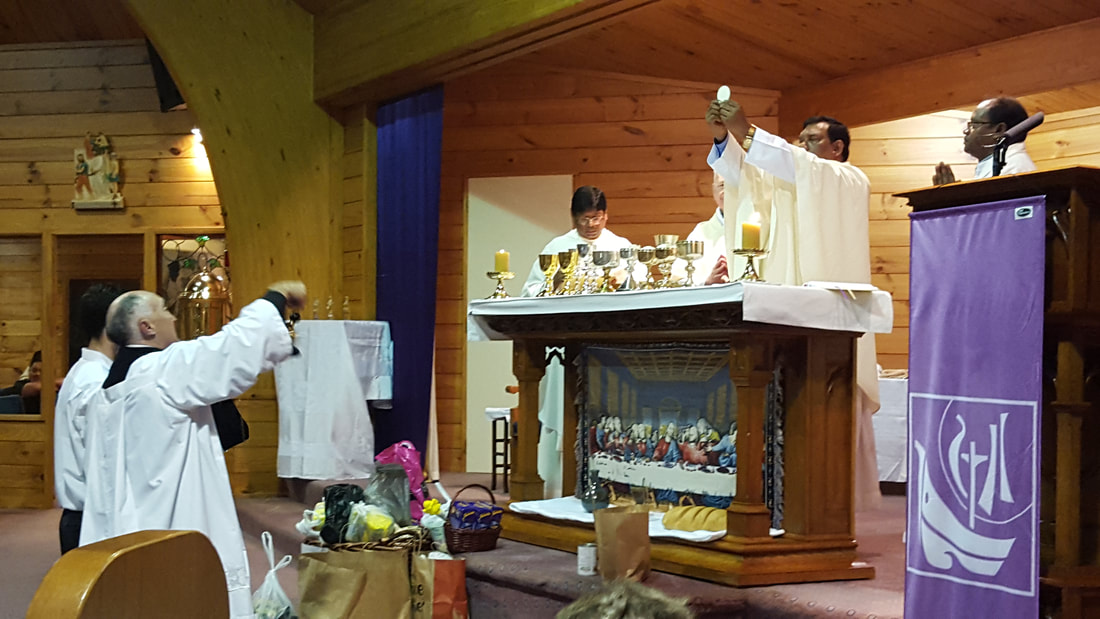
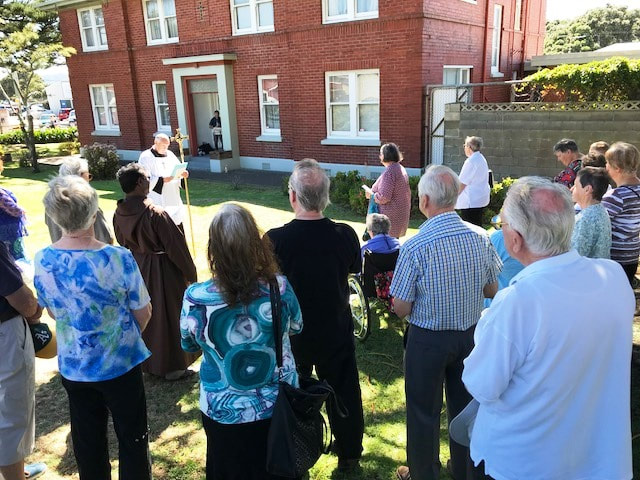
 RSS Feed
RSS Feed